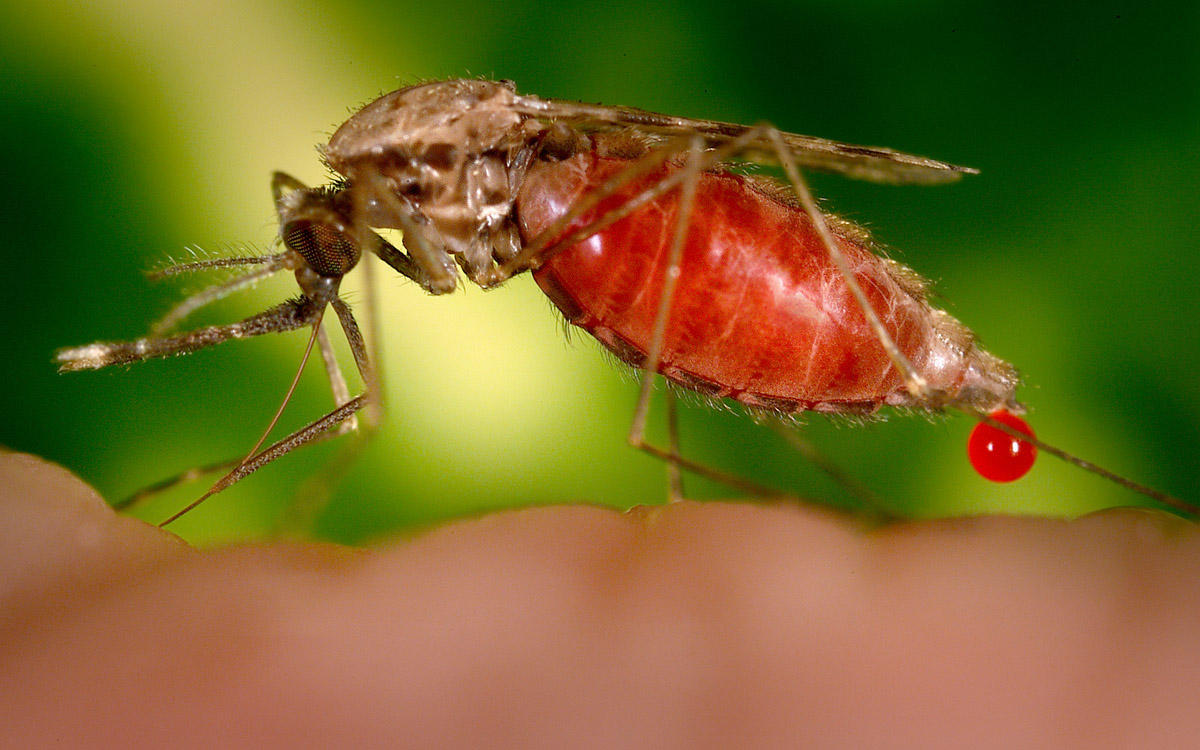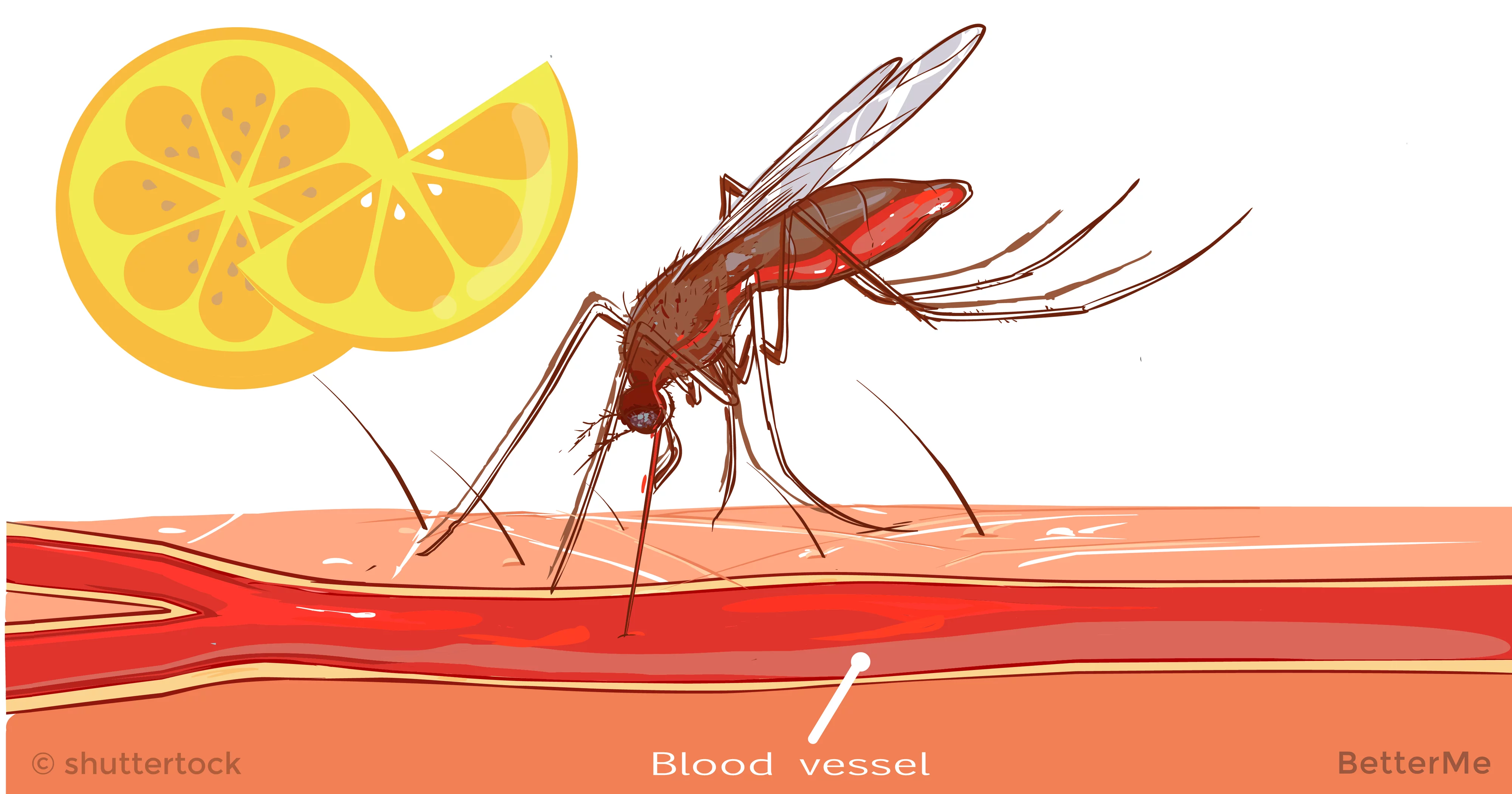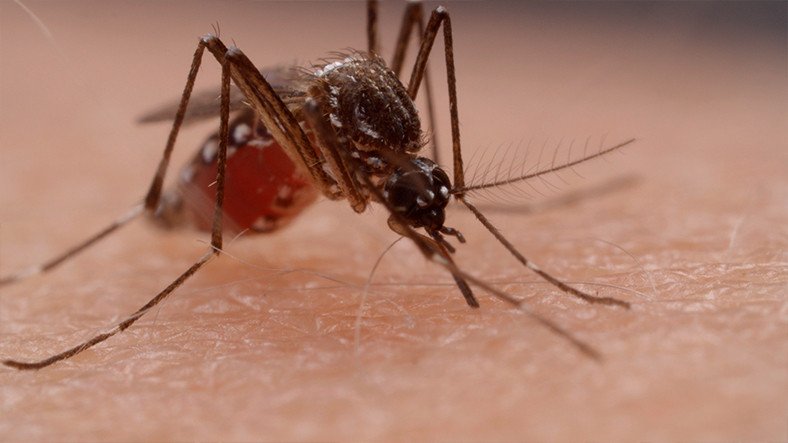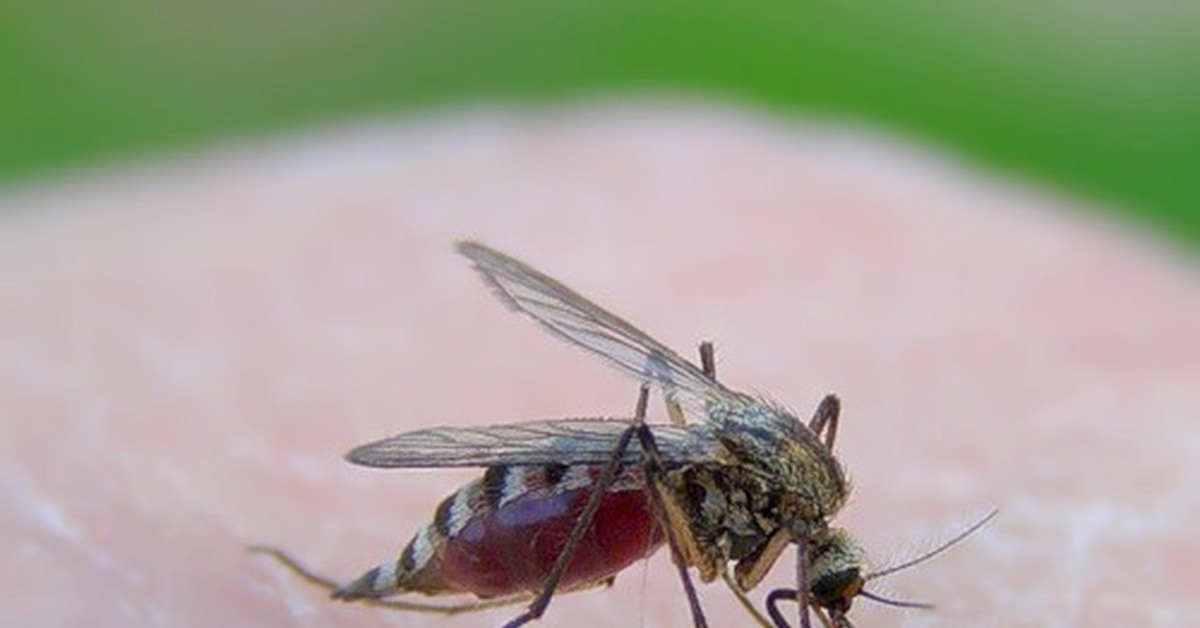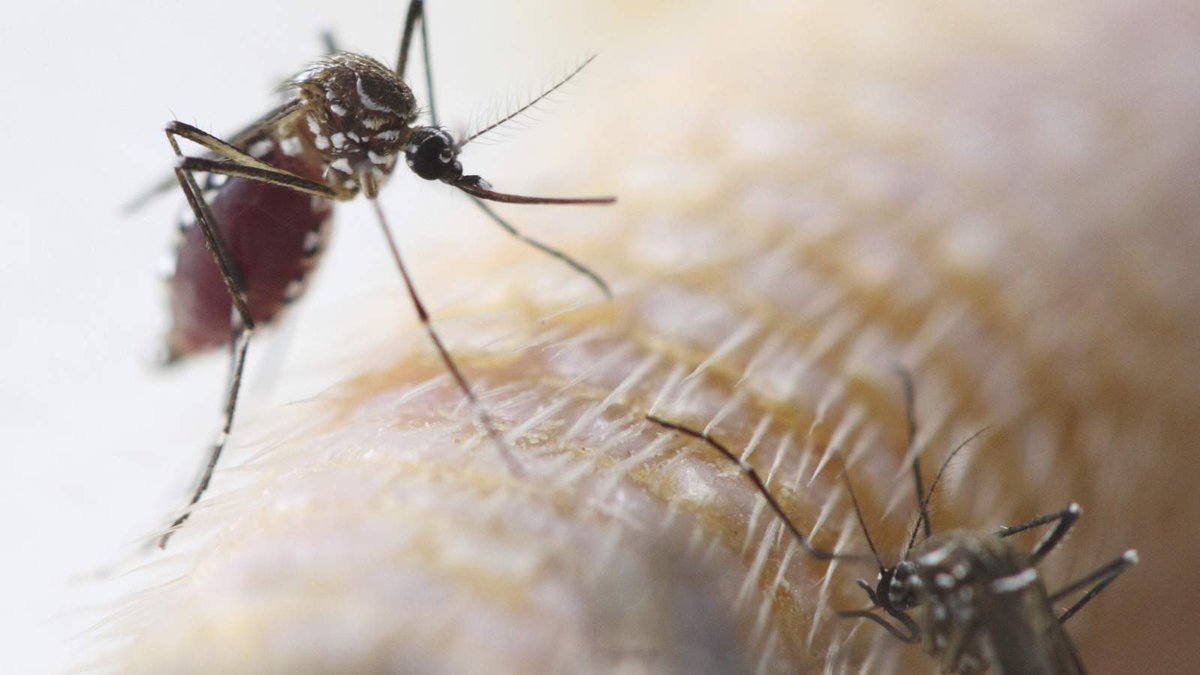Mosquito like bumps. Mosquito-like Bumps: Understanding Hives (Urticaria) – Causes, Treatment, and Prevention
What are the main causes of hives. How can hives be effectively treated. What are the best prevention methods for urticaria. How do hives differ from other skin conditions. When should you seek medical attention for hives. What are the long-term effects of chronic urticaria. How can allergic reactions be managed to prevent hives.
What Are Hives (Urticaria) and How Do They Manifest?
Hives, medically known as urticaria, are a common skin condition characterized by raised, itchy welts that can appear suddenly on the skin. These welts often resemble mosquito bites, leading to confusion among those experiencing them for the first time.
The key characteristics of hives include:
- Raised, red or skin-colored welts
- Intense itching
- Swelling of the affected area
- Rapid onset and potential to change shape or location within hours
Can hives be dangerous? While most cases of hives are harmless and resolve on their own, severe cases can be a sign of a more serious allergic reaction. If hives are accompanied by difficulty breathing, swelling of the throat, or dizziness, it’s crucial to seek immediate medical attention as these could be signs of anaphylaxis, a life-threatening condition.

Common Causes of Hives: From Allergies to Stress
Understanding the triggers of hives is essential for both treatment and prevention. The causes of hives can be diverse and sometimes elusive. Here are some of the most common culprits:
Allergic Reactions
Allergies are a frequent cause of hives. Common allergens include:
- Foods (e.g., nuts, shellfish, eggs)
- Medications (e.g., penicillin, aspirin)
- Insect stings or bites
- Pollen
- Pet dander
Physical Stimuli
Sometimes, hives can be triggered by physical factors:
- Pressure on the skin
- Extreme temperatures
- Sunlight exposure
- Exercise
- Vibration
Stress and Emotional Factors
Psychological stress can manifest physically in the form of hives. This mind-body connection underscores the importance of stress management in preventing outbreaks.
Infections
Various infections, including viral infections like the common cold, can trigger hives in some individuals.
How can you identify your specific hive trigger? Keeping a detailed diary of your activities, diet, and any potential exposures when hives occur can help pinpoint the cause. In some cases, allergy testing may be necessary to identify specific triggers.

Effective Treatment Strategies for Hives
While hives can be uncomfortable and sometimes distressing, there are several effective treatment options available. The choice of treatment often depends on the severity and duration of the symptoms.
Over-the-Counter Antihistamines
For mild to moderate cases of hives, over-the-counter antihistamines are often the first line of defense. These medications work by blocking the action of histamine, the chemical responsible for many allergy symptoms, including hives.
Common antihistamines used for hives include:
- Cetirizine (Zyrtec)
- Loratadine (Claritin)
- Fexofenadine (Allegra)
- Diphenhydramine (Benadryl) – note that this can cause drowsiness
Prescription Medications
For more severe or chronic cases of hives, a healthcare provider may prescribe stronger medications:
- Higher-dose antihistamines
- Oral corticosteroids (for short-term use in severe cases)
- Leukotriene modifiers
- Omalizumab (for chronic hives)
Topical Treatments
To provide relief from itching and inflammation, topical treatments may be recommended:

- Calamine lotion
- Hydrocortisone cream
- Cool compresses
Are there any natural remedies for hives? While scientific evidence is limited, some people find relief with natural remedies such as applying aloe vera gel, taking an oatmeal bath, or using cold compresses. However, it’s important to consult with a healthcare provider before trying any alternative treatments, especially for severe or chronic hives.
Prevention Strategies: Minimizing Hive Outbreaks
Preventing hives often involves a combination of avoiding known triggers and maintaining overall health. Here are some strategies that can help reduce the frequency and severity of hive outbreaks:
Identifying and Avoiding Triggers
Once you’ve identified your specific triggers, taking steps to avoid them is crucial. This might involve:
- Reading food labels carefully if you have food allergies
- Using hypoallergenic products if you’re sensitive to certain skincare ingredients
- Avoiding extreme temperature changes if cold or heat triggers your hives
Stress Management
Given the link between stress and hives, incorporating stress-reduction techniques into your daily routine can be beneficial:
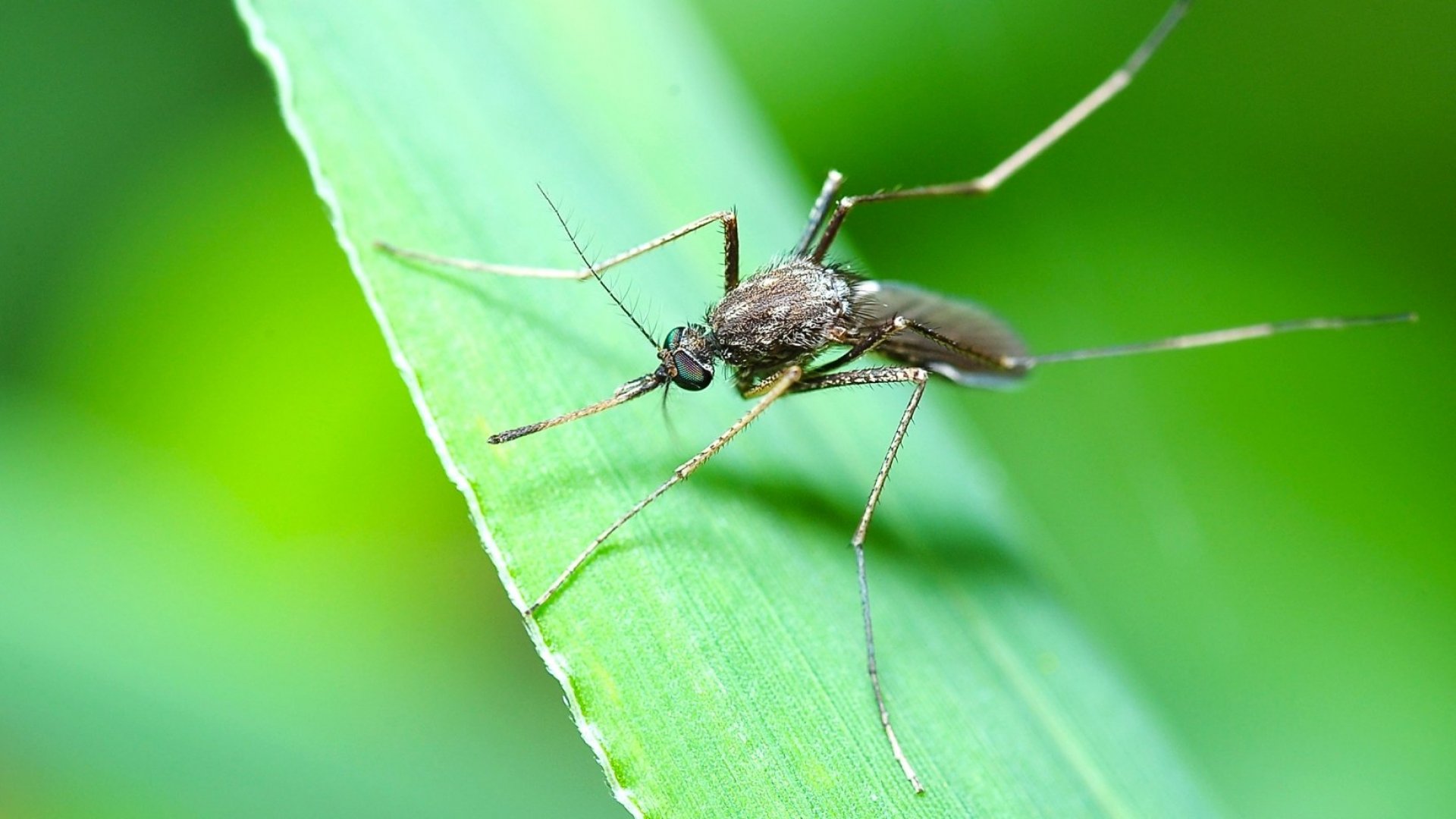
- Regular exercise
- Meditation or mindfulness practices
- Adequate sleep
- Engaging in hobbies or activities you enjoy
Maintaining a Healthy Lifestyle
A healthy lifestyle can help boost your immune system and potentially reduce the likelihood of hive outbreaks:
- Eating a balanced diet rich in fruits, vegetables, and whole grains
- Staying hydrated
- Avoiding excessive alcohol consumption
- Not smoking
How effective are these prevention strategies? While they can significantly reduce the frequency of hive outbreaks for many people, it’s important to remember that hives can sometimes occur unpredictably. Consistent application of these strategies, combined with proper treatment when outbreaks do occur, is key to managing hives effectively.
Distinguishing Hives from Other Skin Conditions
Hives can sometimes be confused with other skin conditions due to their similar appearance. Understanding the characteristics that set hives apart can help in proper identification and treatment.
Hives vs. Rashes
While both hives and rashes involve skin inflammation, there are key differences:
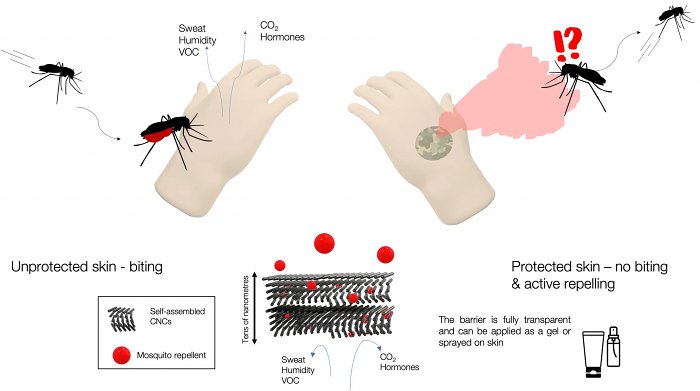
- Hives: Raised, itchy welts that can change shape and location within hours
- Rashes: Generally flat, may be itchy, and tend to stay in one location
Hives vs. Angioedema
Angioedema often occurs alongside hives but involves deeper layers of skin:
- Hives: Affect the surface of the skin
- Angioedema: Causes swelling in deeper skin layers, often around eyes, lips, or extremities
Hives vs. Insect Bites
While hives can resemble insect bites, there are distinguishing factors:
- Hives: Usually appear in clusters and can move or change shape
- Insect bites: Typically have a central puncture point and remain in the same location
Why is accurate identification important? Proper identification ensures appropriate treatment and can help in identifying underlying causes. If you’re unsure about a skin condition, it’s always best to consult with a healthcare professional for an accurate diagnosis.
When to Seek Medical Attention for Hives
While many cases of hives can be managed at home, there are situations where medical attention is necessary. Understanding when to seek help can prevent complications and ensure proper treatment.
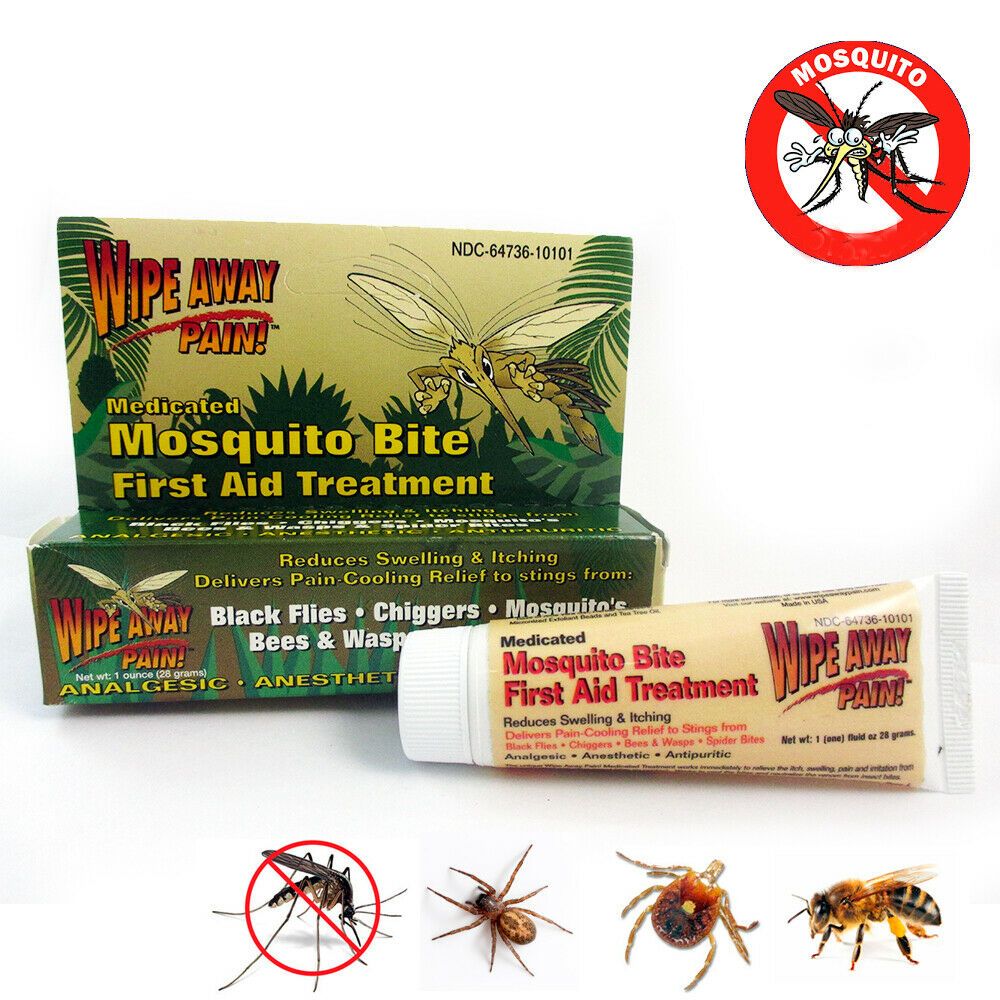
Emergency Situations
Seek immediate medical care if hives are accompanied by:
- Difficulty breathing or swallowing
- Swelling of the tongue or throat
- Dizziness or fainting
- Severe abdominal pain or vomiting
These symptoms could indicate anaphylaxis, a severe allergic reaction that requires immediate treatment.
Persistent or Severe Hives
Consult a healthcare provider if:
- Hives persist for more than six weeks
- Over-the-counter treatments are not providing relief
- Hives are interfering with daily activities or sleep
- You experience frequent outbreaks
Underlying Health Concerns
In some cases, hives can be a symptom of an underlying health condition. Consider medical evaluation if:
- Hives are accompanied by unexplained weight loss, fever, or joint pain
- You have a history of autoimmune disorders
- Hives occur with no apparent trigger
What should you expect during a medical consultation for hives? A healthcare provider will likely conduct a thorough medical history, physical examination, and possibly recommend allergy tests or other diagnostic procedures to determine the cause of your hives and develop an appropriate treatment plan.
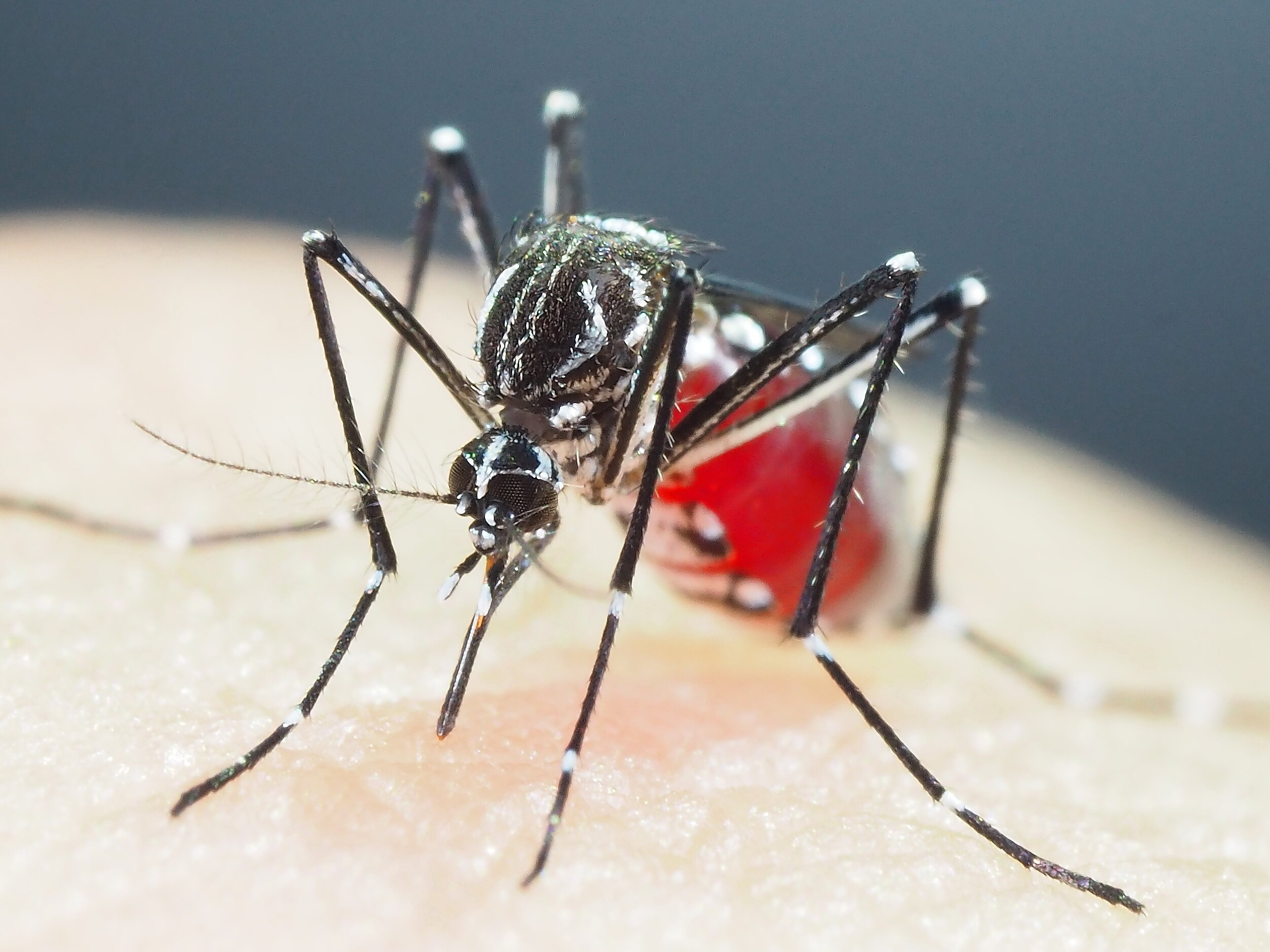
Long-Term Effects and Management of Chronic Urticaria
While acute hives typically resolve within a few days or weeks, chronic urticaria, defined as hives that persist for more than six weeks, can have long-term effects on an individual’s quality of life. Understanding these effects and implementing effective management strategies is crucial for those dealing with chronic hives.
Psychological Impact
Chronic urticaria can have significant psychological effects:
- Anxiety about potential outbreaks
- Depression due to persistent symptoms
- Social isolation if hives affect appearance or activities
- Sleep disturbances due to itching and discomfort
Physical Effects
While hives themselves don’t typically cause long-term physical damage, chronic urticaria can lead to:
- Skin damage from repeated scratching
- Fatigue due to sleep disruption
- Potential side effects from long-term medication use
Management Strategies
Effectively managing chronic urticaria often involves a multifaceted approach:
- Regular medical follow-ups to adjust treatment as needed
- Keeping a symptom diary to identify patterns or triggers
- Joining support groups to connect with others experiencing similar challenges
- Exploring stress-reduction techniques like meditation or yoga
- Considering cognitive-behavioral therapy to address psychological impacts
Can chronic urticaria resolve on its own? While some cases of chronic urticaria do eventually resolve spontaneously, many individuals require ongoing management. The duration can vary greatly, from months to years, emphasizing the importance of working closely with healthcare providers to develop an effective long-term management plan.

Managing Allergic Reactions to Prevent Hives
Given that allergic reactions are a common cause of hives, effectively managing allergies can play a crucial role in preventing hive outbreaks. This involves a combination of avoidance strategies, medication, and in some cases, immunotherapy.
Allergen Avoidance
The first line of defense against allergic hives is avoiding known allergens:
- Food allergies: Carefully read labels and communicate with restaurant staff about ingredients
- Environmental allergies: Use air purifiers, keep windows closed during high pollen days, and regularly clean to reduce dust and pet dander
- Insect stings: Wear protective clothing outdoors and avoid areas where stinging insects are common
Medication Management
For individuals with known allergies, proper use of medication can help prevent or minimize allergic reactions:
- Antihistamines: Can be taken preventatively before potential allergen exposure
- Epinephrine auto-injectors: Should always be carried by those with severe allergies
- Nasal corticosteroids: Can help manage respiratory allergies that might trigger hives
Immunotherapy
For some individuals with severe or persistent allergies, immunotherapy may be recommended:
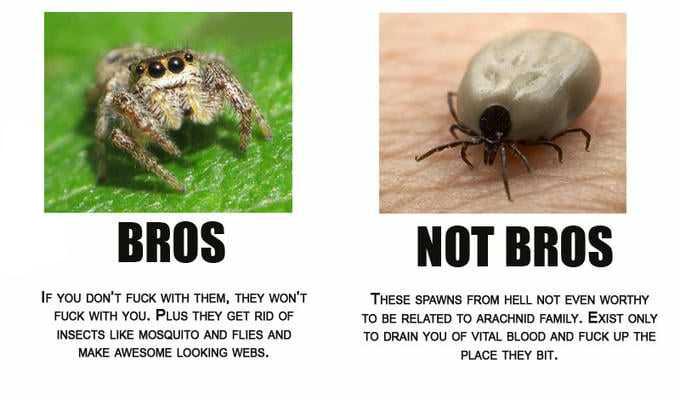
- Allergy shots: Gradually expose the body to increasing amounts of an allergen to build tolerance
- Sublingual immunotherapy: Similar concept to allergy shots, but administered under the tongue
Emergency Preparedness
For those at risk of severe allergic reactions:
- Always carry prescribed emergency medications
- Wear a medical alert bracelet or necklace
- Educate family, friends, and colleagues about your allergies and how to respond in an emergency
How effective is allergy management in preventing hives? While proper allergy management can significantly reduce the risk of hive outbreaks for many individuals, it’s important to remember that hives can have multiple causes. A comprehensive approach that includes allergy management, trigger avoidance, and overall health maintenance offers the best chance of preventing hive outbreaks.
In conclusion, understanding hives, their causes, and effective management strategies is crucial for anyone dealing with this common but often misunderstood skin condition. From identifying triggers and implementing prevention strategies to knowing when to seek medical attention, this comprehensive guide provides valuable insights into managing hives effectively. Remember, while hives can be frustrating and sometimes alarming, with proper care and management, most individuals can successfully control their symptoms and minimize the impact on their daily lives.

Symptoms and Treatment With an EpiPen
Allergy to Stinging Insects Rich Text
- Wear light, pale colors instead of bright or very dark colors. Avoid clothing with colorful or flowery patterns.
- Choose unscented deodorants, hair products, and lotions (including suntan lotion) when possible. Avoid perfumes.
- Avoid drinking or eating sweet things, like soda pop or popsicles. Look before sipping, especially from pop cans. Try not to eat outside.
- Stay away from uncovered food and open garbage cans.
- Be aware that bees often gather near flowering plants, fruit trees or vines with ripe fruit, stacks of firewood, or hollowed out logs (Picture 1).
Types of Reactions – Local and Allergic Systemic (Anaphylactic Shock)
A local reaction to bee stings is not life-threatening. When a child is stung many times, the reaction may still be local. Multiple stings do not mean that the child will become allergic to bees.
Multiple stings do not mean that the child will become allergic to bees.
At the sting site, there may be:
- Redness, swelling, a welt
- Sharp, burning pain
- Itching
An allergic systemic reaction, also called anaphylaxis or anaphylactic shock, is the most severe type of reaction and can be life threatening. The symptoms of a systemic reaction usually develop within 30 to 60 minutes.
The most common symptoms of an anaphylactic shock reaction are:
- Throat: throat tightens, is hoarse or scratchy
- Breathing: wheezing, repeated cough or shortness of breath
- Heart: lightheaded feeling, fainting, weak pulse, low blood pressure
- Mouth: swollen tongue, slurred speech or blueness around the lips, drooling
- Skin: severe swelling or severe itching of face, scalp, arms or legs or the appearance of large hives covering the body
- Stomach: vomiting two or more times or severe stomach cramps
- Feeling of doom
Treating a Local Reaction
- If you can see the stinger (tiny black object) in the skin, scrape it off.
 Do not pinch the stinger with fingers or tweezers because this will squeeze more venom into the skin. Instead, run a credit card across the stinger, from the opposite direction that it went in (Picture 2). For honeybee stings, part of the bee’s body may be attached to the stinger. Wasps, yellow jackets, and hornets do not leave a stinger and can sting many times.
Do not pinch the stinger with fingers or tweezers because this will squeeze more venom into the skin. Instead, run a credit card across the stinger, from the opposite direction that it went in (Picture 2). For honeybee stings, part of the bee’s body may be attached to the stinger. Wasps, yellow jackets, and hornets do not leave a stinger and can sting many times. - If possible, wash the area with soap and water.
- Put cold compresses (ice pack or cold wet washcloths or towels) on the sting site.
- If stung on a finger, arm, foot, or leg, raise the sting site above the level of the heart to reduce swelling.
- Give an over-the-counter (OTC) antihistamine medicine that has diphenhydramine, such as Benadryl®. Read the label to know the right dose for your child.
- To relieve itching, put calamine lotion on the sting site. Sometimes taking a cool bath or adding 2 cups of ground oatmeal or Aveeno® to the bath water can help.

Treating a Systemic Reaction (Anaphylaxis)
Doctors often prescribe an epinephrine auto-injector device (Adrenaclick® Auvi-Q® and EpiPen®) for people with an allergy to bee stings (Picture 3). The auto-injector contains a pre-measured dose of medicine that can stop the systemic reaction. Your child’s doctor will prescribe the right dose for your child based on his or her weight.
Call 9-1-1 after using an epinephrine auto-injector.
If you do not have an epinephrine auto-injector and your child is having symptoms of anaphylactic shock, call 9-1-1 and get emergency help right away.
Safety Tips
- If a stinging insect flies near or lands on your child, teach him to stay calm and slowly walk away. Fast movements or swatting may cause the insect to sting.
- Your child should always wear closed-toed shoes, long sleeves and long pants when outdoors.
 Do not let him walk barefoot. He should avoid wearing loose fitting clothing that can trap the insect inside.
Do not let him walk barefoot. He should avoid wearing loose fitting clothing that can trap the insect inside. - Always have an extra epinephrine auto-injector available. Do not store the injector in a refrigerator or a hot car.
- If your child has had a systemic reaction to a stinging insect, he should wear a medical ID bracelet or necklace (available at most pharmacies and online) (Picture 4).
Allergy Testing
If you think that your child may be allergic to a stinging insect, contact your child’s doctor to discuss allergy testing. Any child who has had a systemic reaction should be tested. Allergy shots can often prevent future systemic reactions. Your allergy specialist will decide if your child needs these shots.
Allergy to Stinging Insects (PDF)
HH-I-74 8/78, Revised 12/18 | Copyright 1978, Nationwide Children’s Hospital
Dermatology
Our Services
Our team of experts includes board certified pediatric dermatologists who have completed advanced training for skin problems specific to children and skin conditions that children inherit.

We have expertise in the medical management of childhood skin disorders and remain at the forefront of cutting edge therapies.
Our team includes nurse practitioners and registered nurses who are dedicated to providing education to families on dermatology conditions and therapies.
Our services are conducted with a pediatric friendly approach. Whenever possible, we avoid invasive, uncomfortable procedures. When a procedure such as a skin biopsy, skin surgery, treatment or diagnostic test is necessary, we minimize anxiety with thorough explanations, efficiency and child-friendly incentives.
We have access to the Nationwide Children’s Hospital outpatient surgical centers and expert pediatric anesthesiologists, enabling us to perform some procedures safely and painlessly while children are asleep.
Our division has a pulse dye laser that is used to treat birthmarks and some other childhood skin problems.

Our team is actively involved in research efforts leading to break-through of new therapeutic approaches to care for patients with vascular anomalies and hemangiomas. Learn more about our Hemangioma and Vascular Malformations Clinic.
Our Clinics
Dermatology maintains a clinic on the main campus of Nationwide Children’s Hospital, as well as in Dublin, Westerville and Canal Winchester, Ohio.
View Our Clinics
Meet Our Team
Patricia M. Witman
Patricia M.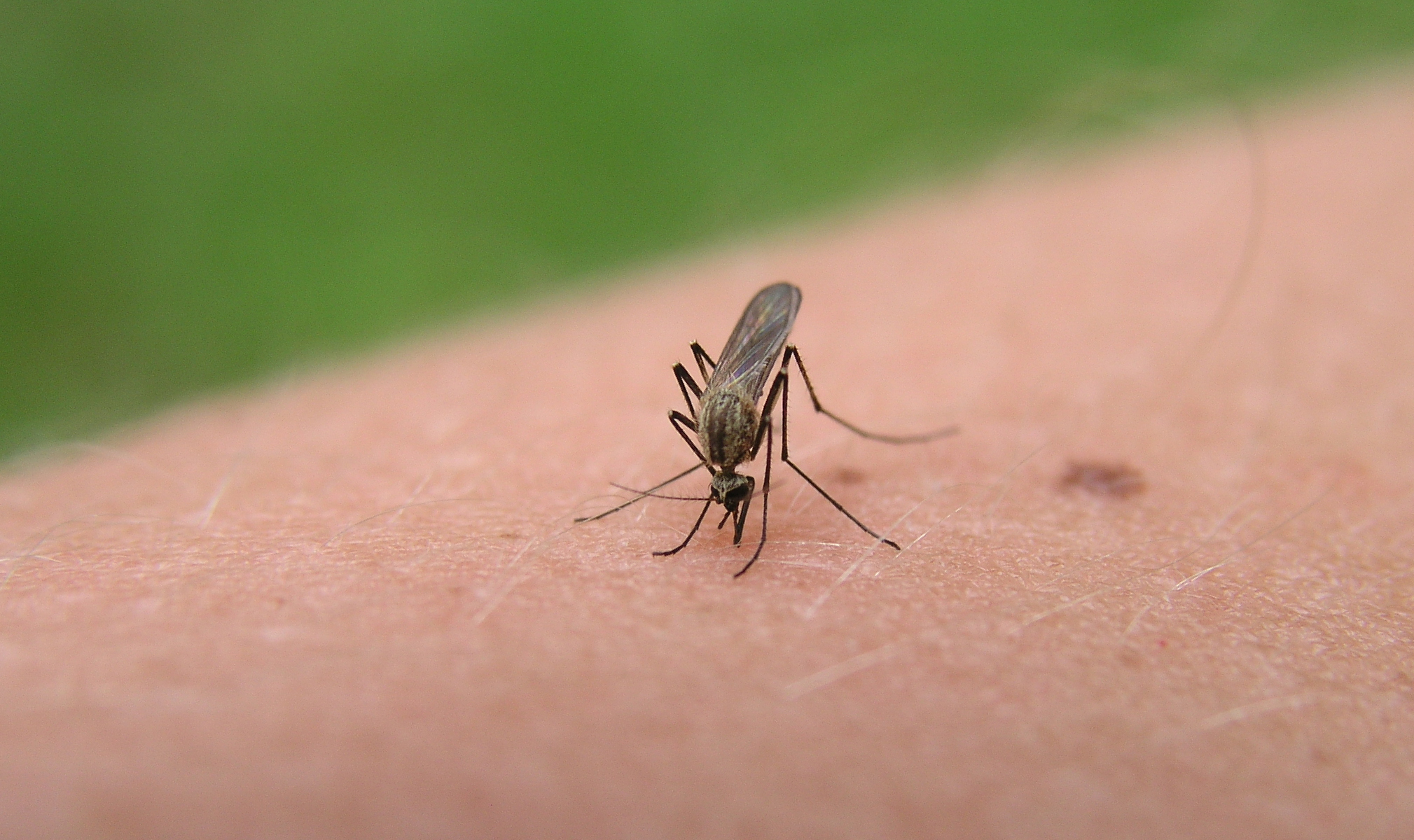 Witman, MD, is the Chief of the Section of Dermatology at Nationwide Children’s Hospital.
Witman, MD, is the Chief of the Section of Dermatology at Nationwide Children’s Hospital.
Pediatric Hair Disorders
The Division of Dermatology is now providing specialized care for children experiencing hair loss and hair growth disorders. Led by Katya Harfmann, MD, the Pediatric Hair Disorders Clinic is available to patients suffering from hair loss, hair shaft disorders and excessive hair growth. Patients and families can expect a comprehensive evaluation that is patient-centered, with visits aimed at determining diagnoses and establishing personalized treatment plans.
Types of hair disorders evaluated:
- Scarring and non-scarring inflammatory alopecias
- Alopecia areata
- Telogen effluvium
- Hair shaft disorders
- Hirsutism
- Pattern hair loss
- Trichotillomania
Dr. Harfmann is also able to provide the following diagnostic and treatment options: scalp biopsy, trichogram, intralesional injections, topical immunotherapy, systemic immunosuppressants and serial photography.
Harfmann is also able to provide the following diagnostic and treatment options: scalp biopsy, trichogram, intralesional injections, topical immunotherapy, systemic immunosuppressants and serial photography.
A physician referral is required for the Pediatric Hair Disorders Clinic.
Mosquito Bites
Mosquitoes are vectors of malaria, encephalitis and yellow and dengue fevers. Their bite can also cause allergic reactions in sensitive individuals.
Why Do Mosquitoes Bite?
Female mosquitoes have piercing mouthparts through which they extract the blood of a host. The protein from gathered blood is used in egg production. Males do not bite and feed on blood. Instead, they get their energy from plant nectars and other sweet substances found in their habitat.
After puncturing the skin with their mouthparts and feeding on blood, mosquitoes leave hard, itchy bumps.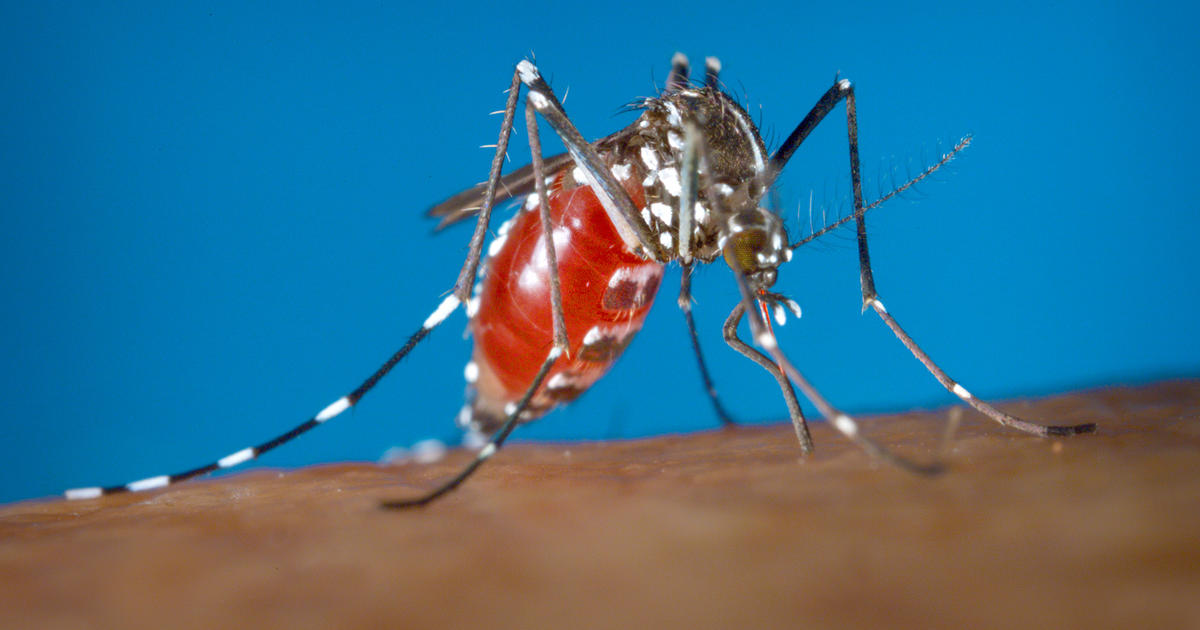 In the blood-feeding process, mosquitoes inject saliva into their host which creates the reactions that cause bite symptoms.
In the blood-feeding process, mosquitoes inject saliva into their host which creates the reactions that cause bite symptoms.
Most mosquito bites are harmless and the symptoms subside in a few days. Some discomforting symptoms include swelling of the bite site, soreness, and bleeding. While mosquitoes are an itchy, uncomfortable nuisance, the important problem arising from mosquito bites is transmission of viral or parasitic diseases.
Symptoms & Reactions
Many mosquito species are such stealthy biters that most people never notice their first mosquito bites. Other species are ferocious biters whose bite is moderately painful. The symptoms of mosquito bites include:
A puffy, white bump appearing a few minutes after the bite often with a small red dot in the middle of the bump
A hard, reddish bump, or bumps, that shows up about a day after a bite
Swelling around the bites
Small blisters instead of hard bumps
Dark spots that look like bruises
In children and people with immune system disorders, mosquito bite symptoms may include:
Always seek the advice and assistance of a physician when dealing with mosquito bites.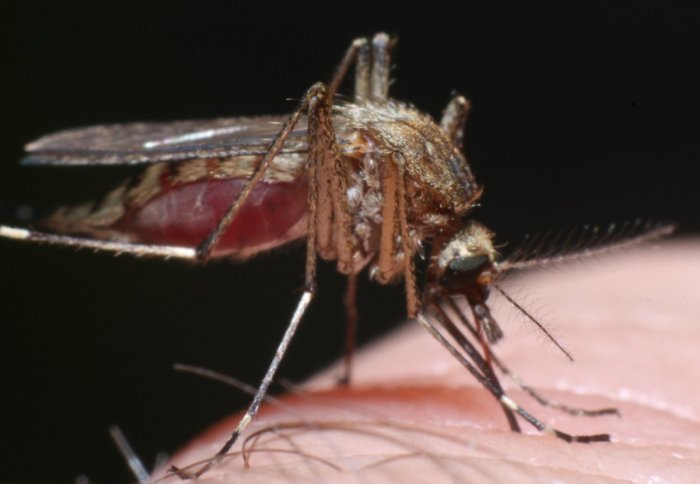
Allergies
While not particularly painful, the bite of a mosquito can create physiological responses in humans. When a mosquito inserts her proboscis through the skin, her saliva creates a small, red bump. These bumps produce mild to severe itching in many people. Some people may become less sensitive to mosquito saliva through repeated exposure, while others may develop allergic reactions.
Symptoms of an allergy include blistering and inflammation, as well as asthma like reactions. Mosquitoes also carry diseases such as yellow fever and dengue fevers, malaria and encephalitis and are capable of passing them from host to host.
In most cases, a mosquito bite produces a red, itchy bump, which can bleed if scratched. Those with mild reactions to a mosquito bite can take antihistamines to reduce itching and swelling. Consult a physician before taking any new medications. Over time, some individuals develop immunity to the saliva of a mosquito and do not experience any symptoms at all upon being bitten.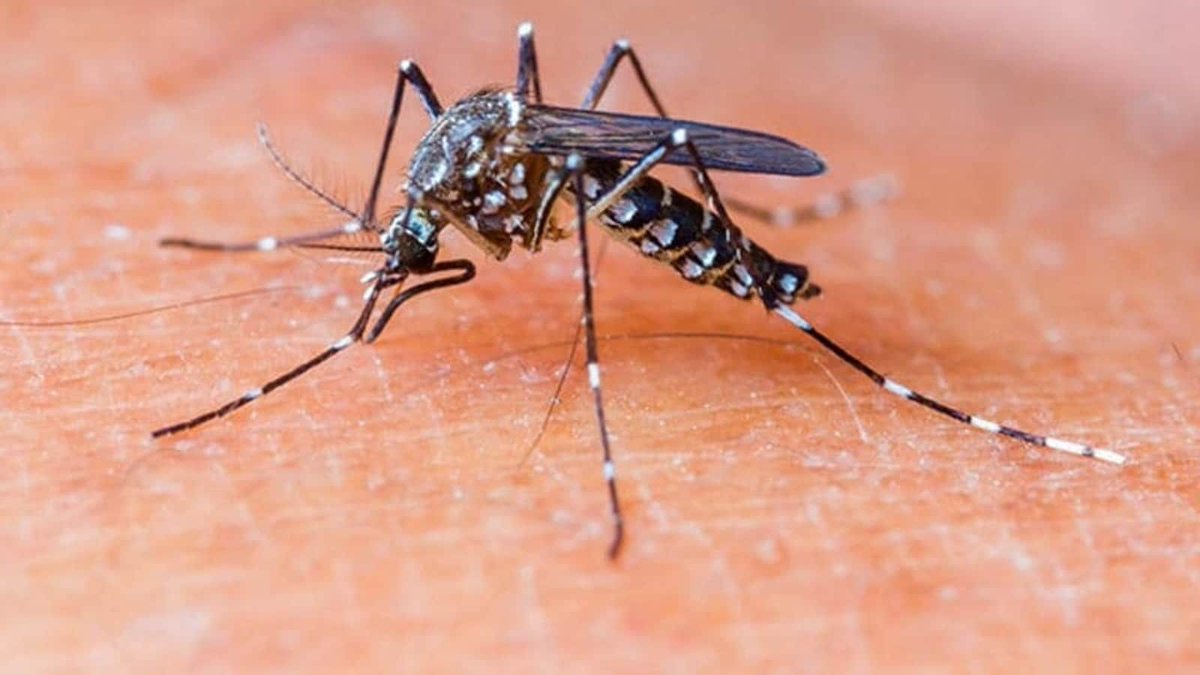
Severe Symptoms
People who spend a great deal of time outdoors or already have compromised or weak immune systems are especially susceptible to mosquito allergies. More severe symptoms include:
Blistering rashes
Bruises
Excessive swelling
Anaphylaxis
Hives
Asthma attack
In the event of a severe allergic reaction to a mosquito bite, a medical professional should be contacted immediately.
When spending time outside, individuals with known or suspected mosquito allergies should cover their skin in khaki or beige clothing, as mosquitoes are not as attracted to these colors. Because mosquitoes may be attracted to certain smells present in soap, shampoos and lotions, these should be used in moderation and unscented varieties may be less attractive.
Mosquitoes are most active from dusk until dawn. If possible, avoid being outside during these times.
Risks Associated With Infections
As with most insect and spider bites, the risk of secondary bacteria infection exists. In addition, there is a risk of disease transmission from mosquito bites.
How To Identify Bite On Pets
Excessive scratching and minor swelling maybe some of the indications of mosquito bites on pets. Much like people, animals may experience allergic reactions to mosquito bites caused by allergic compounds in the mosquito’s saliva.
Repellents
The use of insect repellents is recommended by the Centers for Disease Control and Prevention (CDC). Repellents should not come into contact with the eyes and mouth, and special care should be taken when applying repellent to small children. The use of citronella or insect repellent may be effective in avoiding bites.
Bite Treatment
After receiving a mosquito bite, a cold compress can be applied to the affected area in order to reduce swelling. Mild antihistamines and anti-itching compounds relieve itching .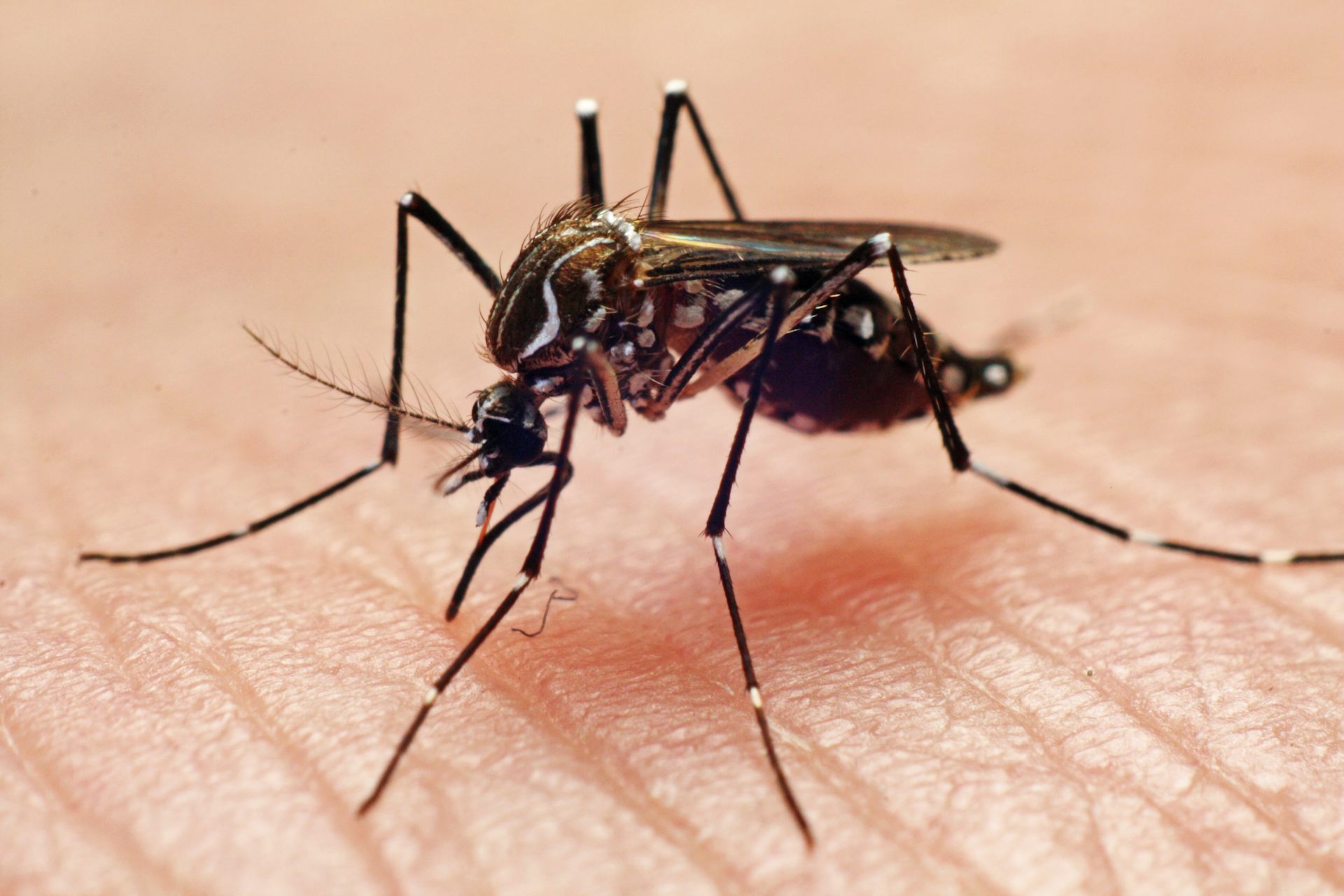 Anti-inflammatory medications such as ibuprofen or naproxen can also be used. A paste made from baking soda and water may prove effective, as will calamine lotion.
Anti-inflammatory medications such as ibuprofen or naproxen can also be used. A paste made from baking soda and water may prove effective, as will calamine lotion.
Contact your physician before taking any new medications. If you experience more severe symptoms following a mosquito bite, contact a medical professional immediately.
Do Mosquitoes Die When They Bite?
Mosquitoes and ticks are both public health pests and vector pests. As public health pests, they can transmit diseases reportable to and tracked by the CDC, and as vector pests, they are able to transfer diseases to humans.
This means that mosquitoes and ticks are not simply annoying pests because of their bites – they are pests that should not be ignored, given their potential to possibly cause more serious health problems.
Mosquitoes can transmit diseases such as:
Eastern Equine Encephalitis (EEE) – Aches and fever are symptoms of EEE, which can also cause brain infections.

Malaria – Signs of possible Malaria are fever, vomiting and diarrhea.
West Nile virus – Symptoms of West Nile virus can be aches, rashes, severe headaches and fever.
Dengue fever – Vomiting, rashes and a fever are common signs of Dengue fever. Another symptom is severe headache.
Zika virus – Along with a fever and itching rash, Zika virus can also cause joint and muscle pain.
Ticks can transmit diseases like:
Lyme disease – Signs of Lyme disease include fatigue and joint pain. Sometimes Lyme disease can even cause brain inflammation.
Rocky Mountain spotted fever – Symptoms can include fever, aches and vomiting. Sometimes these symptoms are accompanied by neurological changes.
Colorado tick fever – Fever, muscle aches severe headaches and nausea are all possible symptoms of Colorado tick fever.
Mosquito and Tick Hot Spots on Your Property
You can take steps to help reduce mosquito and tick populations on your property by working with your pest management partner to minimize conducive conditions for each pest.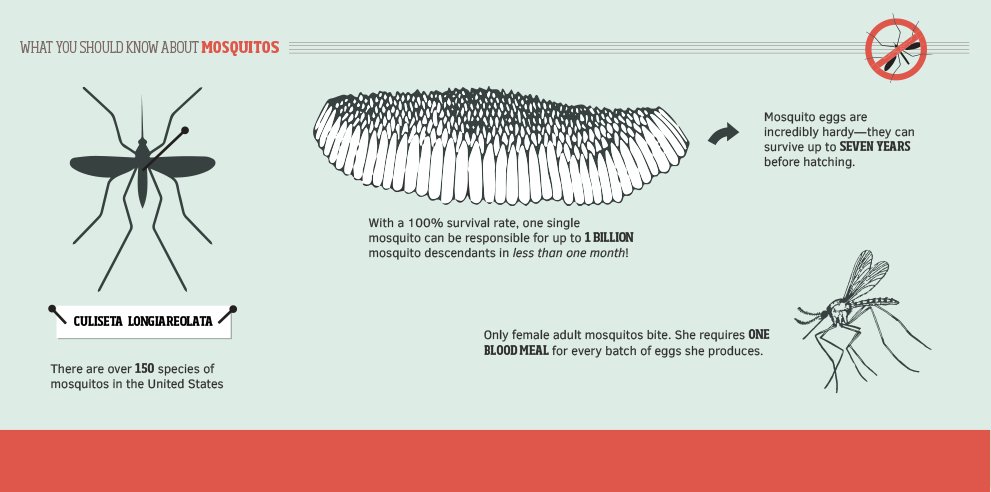 By doing so, you can help reduce the habitats where they thrive. To make these changes, you must first identify mosquito and tick hot spots, which include:
By doing so, you can help reduce the habitats where they thrive. To make these changes, you must first identify mosquito and tick hot spots, which include:
Building entrances – Ticks thrive in grasses and trees that make up your property’s landscaped areas. Landscaping close to your building entrance allows ticks to hitch a ride onto incoming customers and employees.
Pools, ponds and water fixtures – Mosquitoes love moisture and can breed in as little as a bottlecap full of water, making these fixtures an enticing attractant.
Outdoor eating areas and kitchens – These areas contain not only the landscaping and greenery ticks love, but also additional water and food, extending an even warmer invitation to mosquitoes.
Playgrounds – Surrounded by greenery, playgrounds are also home to other pests, like rodents and rabbits, which can bring ticks with them. These areas are especially important to monitor to keep families safe.

Mosquito and Tick Prevention Tips
To help prevent mosquitoes and ticks from harming your customers, employees and business, consider taking proactive measures. Simple outdoor upkeep can help keep these pests at bay, such as maintaining landscaping; minimizing water build-up; and clearing away brush, fallen leaves, logs and other items they may use as shelter. Adding fans to outdoor areas with heavy foot traffic can help deter mosquitoes further, since they are weak flyers.
Further preventive measures include installing screens on windows and doors to keep pests from entering your building, installing traps in discrete areas and creating a 3-foot wide barrier between trees and grass using wood chips or gravel. Last, consider planting mosquito-repelling plants such as citronella, marigold, mint or lavender.
Hiring a professional to handle mosquitoes and ticks can take the pressure off of you and your employees. In fact, Orkin can help develop a customized plan including a comprehensive inspection, habitat modification, production application as needed and ongoing monitoring and maintenance for your property’s needs. With our assistance, you can do more than help protect your customers and employees – you can help protect your business.
With our assistance, you can do more than help protect your customers and employees – you can help protect your business.
Ready to help declare victory over vector pests this year? Learn more about our mosquito and tick services by scheduling a free audit at your property.
Do I have Bed Bugs or Mosquito Bites?
In addition to skin reactions to bites, the primary ways to differentiate bed bug bites and mosquito bites include the differences in bite location on the body, the pattern of bites on the body and the estimated time when a bite occurred.
General Symptoms of Bites
Mosquito Bites: Usually appears as puffy white and reddish bumps that begin a few minutes after the bite and become a reddish-brown bump a day or so after the bite. In some instances a host may have small blisters and dark spots that look like bruises in extreme cases.
Bed Bug Bites: Symptoms are variable and may result in no visible symptoms at first. However, symptoms of reddish bumps on skin, inflammation and red blotches that can become areas of raised, itchy bumps that eventually cause a burning sensation.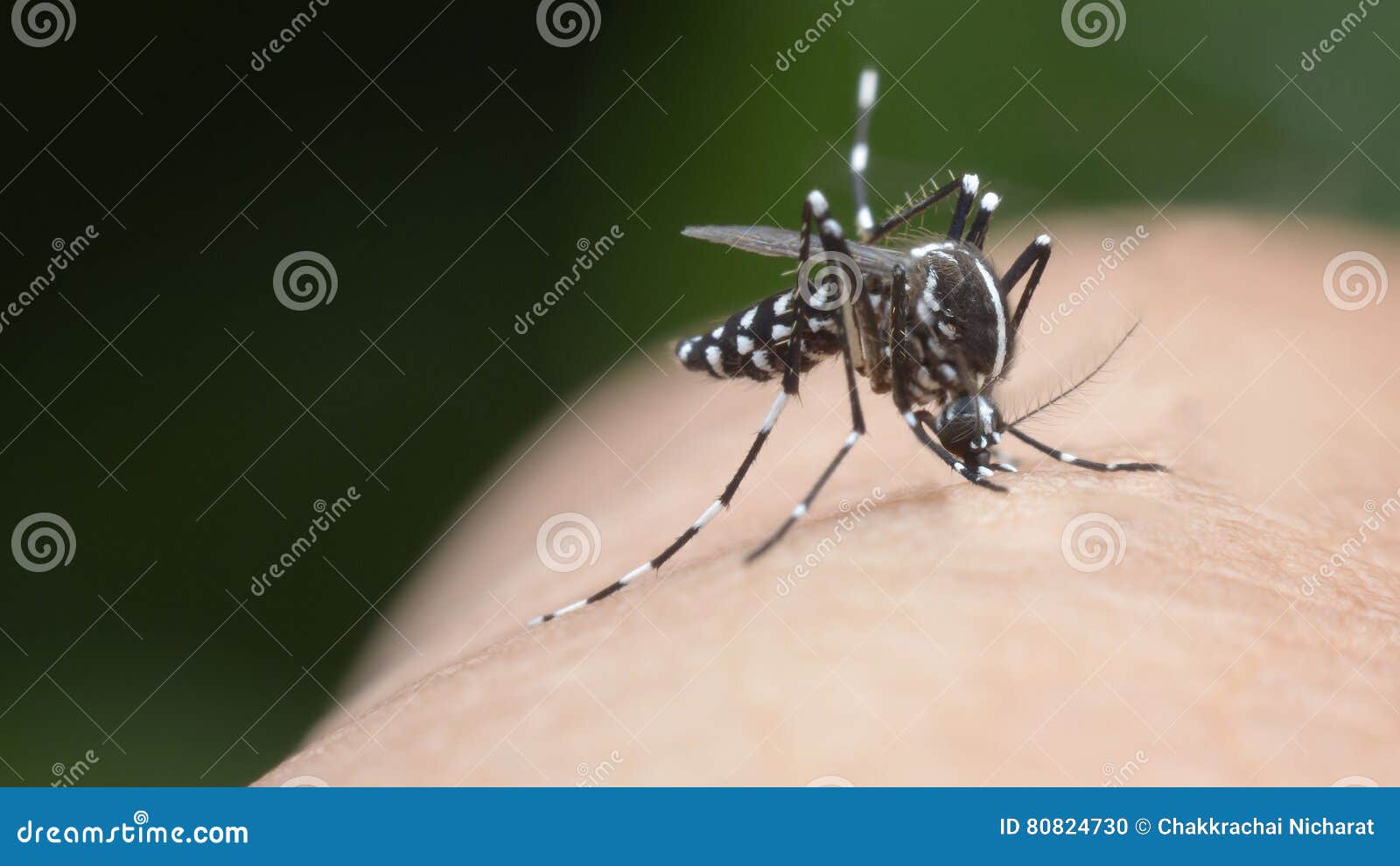
Other Important Information
Sensitivity to Bites:
Mosquito Bites: Generally, sensitivity to mosquito bites tends to decrease as the number of times someone is bitten increases. This may partially explain why children are usually more sensitive to mosquito bites than adults.
Bed Bug Bites: Generally, the opposite relationship to number of bites and sensitivity occurs with bed bug bites. Often someone who is bitten by a bed bug doesn’t even realize the bug has fed, but as the number times they are bitten increases, the sensitivity to those bites also increases.
Mosquito Bite Symptoms: Moderately painful, very irritating, itchy and leave round, red or pink mark on the skin. Mosquito bites may occur anytime during the day, at dusk or at night.
Bed Bug Bite Symptoms: Usually are generally unnoticed and can be almost painless at the time of the bite. In fact, much of the time a person does not even realize they were bitten unless they notice the bite welts.

Time to Heal: Mosquito bites usually clear up and “heal” much quicker than bed bug bites, which may persist for a few days or even longer.
Bite Sites:
Mosquito bites are generally distributed in a random manner over parts of the body that are not protected by clothing (legs, face, back neck, etc.).
Bed bug bites are more clustered and often occur in a distinct bite pattern that can be described as being multiple and arranged in a linear or circular fashion. Common locations include the neck, face, back, chest, arms, legs and around the crotch.
Signs & Characteristics
In many instances a bed bug is unable to digest all of the blood meal it takes from a host, so it may actually excrete a portion of that blood meal onto the sheets the host is sleeping on. Therefore, if you see small, round bloodstains on your sheets, chances are good that a bed bug feed on you during the night.

Hosts for both mosquitoes and bed bugs vary in attractiveness to the insects, which points out that both of these insects may bite one person and almost completely ignore someone else who is nearby. This behavior is very important to recognize since bed bugs are known to bite one person who is asleep and not bite another person who is asleep nearby.
Lifecycle Difference
Mosquitoes develop by complete metamorphosis, which means they go through four stages in their developmental cycle that is entirely different – egg, larvae, pupae and adults. Only the female mosquito adult bites and feeds on blood.
Bed bugs develop by incomplete metamorphosis, which means they go through only three life stages – egg, nymphs and adults – and both the male and female nymphs and adults feed on blood.
Disease Transmission Potential
Mosquitoes are known transmitters of many diseases that affect people or animals.

Bed bugs are not proven transmitters of any known diseases to people or animals.
If someone continues to scratch either mosquito or bed bug bites and does not keep the bite clean and medicated, there is a risk of a secondary infection.
Summary
Should either mosquitoes or bed bugs become a pest issue, the best course of action is to contact your pest management professional. It is important to request an inspection, plus an integrated management plan that includes science-based information, recommendations, products and methods to be used.
What they look like and how to treat them
Why do mosquitoes bite?
There are over 3,500 types of mosquitoes, but not all mosquitoes bite humans. Mosquito bites are caused by female mosquitoes piercing your skin with their needle-like mouth parts and feeding on your blood. They need your blood to help produce their eggs.
When they bite you – usually on humid summer nights – they inject saliva into your skin. Your body reacts to this saliva and gets small, red bumps that can be itchy. Usually these bites go away after a few days without needing any treatment.
But some people may get more serious symptoms like lots of swelling, itchiness, redness and pain, and may need medical treatment. And if you scratch them, mosquito bites may become infected, which means you’ll need to see a doctor and may need antibiotics.
Sometimes, mosquitoes in certain parts of the world carry serious infections like malaria and dengue – you’ll need to see a doctor if you get these diseases. In rare cases, some people may get a life-threatening allergic reaction to mosquito bites called anaphylaxis that needs emergency medical treatment.
What do mosquito bites look like?
Like many other insect bites, mosquito bites usually look like small, red bumps on your skin. There can be 1 bump, or more than 1 if you’ve been bitten a few times. You may see some swelling around the bites and they may also sting, feel very itchy, sore or warm. Sometimes, you may also get blisters where you’ve been bitten.
You may react differently than someone else does to a mosquito bite, or you may not have any reaction at all. Most people have mild symptoms – the small, red bumps usually appear quickly and go away without any treatment after a few days. Sometimes, the bites may only appear a few days after you’ve been bitten and take days or weeks to heal. And sometimes, you may only get symptoms after a few days or longer, which may be a sign that your bite is infected.
If you have a more serious reaction, your symptoms may include:
- swollen glands in your neck, armpits or groin
- an itchy, raised rash called hives (urticaria)
- a low fever – if you have a high fever, it may mean you have an infection
- a big area of swollen, red skin around the bite or bites
It’s rare but sometimes, mosquito bites may cause anaphylaxis, which needs emergency treatment in hospital.
Read more about how to know which insect has bitten you and how to identify flea bites, bedbug bites and ant bites.
Which diseases can you get from mosquito bites?
Mosquito bites are usually harmless. But in some parts of the world, mosquitoes can carry viral infections. And if these infected mosquitoes bite you, the viral infection may get passed on to you. Some of these diseases are more common than others, like malaria.
The infections mosquitoes can spread include:
If you’re going to a part of the world where you’re at risk of getting a mosquito-borne infection, it’s important to get medical advice before you travel. You may need to take medication or have vaccinations to stop you getting 1 of these diseases. Read more about travel vaccinations.
How to get rid of mosquito bites
Mosquito bites tend to get better on their own – usually within 3 to 10 days.
As soon as you get bitten, try these self-care measures:
- wash the area with soap and water to wash away the mosquito saliva, which causes symptoms like swelling and itchiness
- use cold compresses like an ice pack or a cold, damp cloth to help with any swelling
- take simple painkillers to help with pain – but speak to a pharmacist first on how to safely get and use these medicines
- don’t scratch your bites, as you could break your skin and bacteria from your hands could lead to a bacterial skin infection like cellulitis
Read more about the best treatment for insect bites.
How to stop mosquito bites itching
To relieve any itching, use an ice pack or cold, damp cloth to soothe your skin and try these treatments:
- rub calamine lotion on the bite area
- use a steroid cream like hydrocortisone cream
- take antihistamine medication to help with swelling and itchiness – speak to a pharmacist about which creams or tablets will work best for you
Treatment for infected mosquito bites
The treatment for an infected insect bite will depend on which infection you’ve got. Some conditions are more serious than others, so it’s important to get advice from a doctor as soon as possible.
Treatment options include:
- antibiotics if you’ve got cellulitis or other skin infections. Read more about the treatment for cellulitis
- antimalarial medication for malaria – it’s important to get treatment as soon as possible, as malaria can be life-threatening. But if the infection is treated early, most people get better. Read more about antimalarial medication
For diseases like dengue, yellow fever, Zika, chikungunya or encephalitis, there’s no cure. Treatment focuses on supporting your body until it can get rid of the infection. It includes resting at home, drinking lots of fluid and taking simple painkillers if you’re in pain or have a fever. But first speak to a pharmacist or doctor on how to safely get and use these medicines. For example, if you have dengue, you should only take paracetamol, as ibuprofen or aspirin may cause bleeding problems.
If these diseases make you very ill, you’ll usually need to go to hospital to get treatment like intravenous fluids through a drip in your arm (IV), oxygen or medication.
Read more about the treatment for dengue, yellow fever and West Nile virus.
How to prevent mosquito bites
Mosquitoes tend to bite on hot summer nights. Try these tips to prevent them biting you:
- use air conditioning – mosquitoes don’t like cold rooms
- sleep under mosquito nets
- put mosquito nets or screens on your windows and doors
- don’t keep stagnant (still) water around, like water in buckets, as mosquitoes tend to collect around this water
- wear clothes that protect your skin like long-sleeved shirts and trousers. You can also treat your clothes with a chemical called permethrin or buy clothes treated with this chemical. But don’t apply this chemical directly to your skin
- use insect repellent – try ones that contain an ingredient called DEET
When to see a doctor about mosquito bites
Call an ambulance immediately if you have any signs of anaphylaxis, including:
- trouble breathing (wheezing)
- your face, mouth or throat swelling up
- feeling sick (nausea) or being sick (vomiting)
- trouble swallowing
- feeling faint, dizzy or fainting
You’ll need treatment in hospital for anaphylaxis, including oxygen, fluids and medicines like adrenaline or steroids. When you go home, you’ll usually be given an emergency injection that contains adrenaline. Carry it with you at all times so you can use it in case of an emergency.
Sometimes, a mosquito bite can get infected or you might have picked up a mosquito-borne disease. See a doctor urgently if you’ve been bitten by a mosquito and:
- the area around the bite is getting bigger, more red, sore and warm
- have a fever
- after a few days, your symptoms aren’t getting better
- have a new rash
- you feel like you have the flu
- have muscle and joint pain
- have a sore tummy or poo that’s very watery
- have headaches
- your skin or the whites of your eyes are yellow (jaundice)
- your neck hurts when you move it
- have trouble speaking or moving parts of your body
- the bites are in your mouth or throat, or near your eyes
See a doctor if you’ve been in an area where mosquitoes carry diseases and you don’t feel well, even if it’s months later. This is because you won’t always realise you’ve been bitten, as it usually happens at night when you’re sleeping and you may not get any symptoms. With some infections like malaria, symptoms may only appear up to 1 year later.
You should also see a doctor if you’re pregnant or planning to get pregnant and you’ve travelled to or live in an area where Zika is found, as it can affect your developing baby. Sometimes, you’ll have no or only very mild symptoms, so you might not know you’ve caught this disease either.
Your health questions answered
Why do my mosquito bites get so big?
Everyone’s body is different and reacts differently. The first time you’re bitten, you usually don’t get a reaction. But after this first bite, your body will recognise the toxins in a mosquito’s saliva and you may get more obvious symptoms. Some people may have a more serious reaction like a large area of redness around the bite, as their bodies have had a stronger reaction to this saliva. And if you have conditions like HIV or cancer, you may have a more serious reaction too. If you get a skin infection from scratching the bites, your bites may get very big and this red, swollen area may keep spreading. See a doctor if you’re worried about your mosquito bites.
Key takeaways
- most mosquito bites are harmless and you’ll have mild symptoms, which usually go away in 3 to 10 days
- mosquito bites usually look like small, red bumps, and they can itch a lot
- mosquito bites usually go away by themselves without any treatment
- if your bites are very itchy, use cold compresses, steroid creams and antihistamines to get rid of the itchiness
- prevent mosquito bites by using insect repellent, covering up your skin and sleeping under mosquito nets
Here’s Why Your Mosquito Bites Get So Extreme • Modern Dermatology Seattle Washington
by Cory Stieg for Refinery29
If your summer glow also incorporates a few dozen glowing-red bug bites, congrats on being very delicious. It’s normal to get bug bites in the summertime, and some people are certainly more susceptible to them than others.
Researchers know that the odor of your skin and the amount of carbon dioxide your body releases can impact whether or not you tend to get bitten by mosquitoes. And some of these factors might be genetic.
Sometimes you don’t have that many bites, but the ones you do have are absolutely ginormous, swollen, and seemingly taking over your body. Is there a reason why some people get worse bug bites than others? Yes, according to Shari Lipner, MD, PhD, assistant professor of dermatology at Weill Cornell Medicine.
When a mosquito bites you, it injects its saliva into your skin, Dr. Lipner says. “The saliva contains proteins or allergens that cause the itching, swelling, and redness in most people,” she says. The most common reaction is a small red bump with a dot in the center, she says. But some people’s skin is simply not as chill.
Basically, the intensity of your bug bite correlates to how allergic you are to the saliva, says Heather Rogers, MD, a dermatologist in Seattle. If you get small mosquito bites, you’re not that allergic, for example. Some people are blessed with immune systems that don’t recognize mosquito saliva as an allergen at all, so they won’t have a reaction to the bites, Dr. Lipner says. If that’s you, avoid gaslighting your itchier pals, because some people do get way worse bites, even if you swear you’ve had nary a nibble.
“Some people get more than a small red bump,” Dr. Lipner says. Normal-sized mosquito bites may turn into large welts, sometimes ones that ooze, she says. And in rare cases, people can even experience anaphylaxis from a bug bite, which is a severe allergic reaction. “People may have lip swelling, and shortness of breath,” she says, underscoring that you have to seek medical attention ASAP, if that happens to you for any reason.
The amount of time that a mosquito feeds on your skin can also impact the size of the bite, Dr. Rogers says. “The longer the mosquito feeds, the more saliva you are exposed to,” so even if you react normally to mosquito bites, there’s a chance those buggers have turned you into an all-you-can-eat buffet, leaving you with bigger bites than usual, she says.
And your grandma was right when she warned you to leave those bites alone. Dr. Rogers says scratching “can make the bites itchier, and create scarring, which can lead to pigmentation changes or the formation of a permanent bump.” Instead, the best thing to do is press an ice pack on your bites, she says. “Your nerves cannot feel cold and itch at the same time,” so it’ll quell the itch, and won’t make the bites any worse, she says. If you’re really miserable, you could also try using a 1% hydrocortisone cream a couple times a day until the bite subsides, or taking an antihistamine like Zyrtec or Allegra for a week if you’re having an outsize reaction, Dr. Rogers says. As a last resort, she recommends just covering a bite you’re too tempted to scratch with a Band-Aid, and hope it’s out of sight, out of mind.
If your bumps look out of the ordinary for you, it might be a bigger deal than just bugs, in which case it’s a good idea to get checked out by your doctor. And ultimately, using an EPA-registered mosquito repellant will make ‘skeeters buzz off, so next time, you’ll be the one wondering, “Mosquitos? What mosquitos?” instead of maniacally clawing at your skin.
Read Original Article
Bug Bites We Can Treat | Helendale Dermatology
One of the most common questions we get from May to August is, “How can we get rid of bug bites?” Many people during the hot summer months are afflicted with bug bites. Not much else can ruin a summer vacation more! Although annoying, most bug bites in the US do not carry the risk of transmitting diseases (there are exceptions). The risk for secondary bacterial infection exists with all itchy bug bites, so always be sure to keep the affected area clean.
What Does a Mosquito Bite Look Like?
Mosquito Bite
Do you see a white raised bump on your skin with a tiny red dot in the middle? Do you have a few hard, reddish bumps with swelling around the base? These symptoms indicate mosquito bites. Other tell-tale symptoms include bleeding, incessant itching, swelling, and soreness around the affected area.
Some patients with immune system disorders can experience more severe symptoms that include hives, swollen lymph nodes, headaches, fever, and extreme swelling. Those with allergic reactions to mosquito bites may see blistering, inflammation, and other reactions similar to asthma. It’s possible for some patients to become immune to these bites and not experience any skin reactions or itching at all.
Black Fly
What Does a Black Fly Bite Look Like?
Bites from a black fly are sometimes so small that they can’t always be seen, but they usually induce some degree of pain. These bites result in anywhere from mild to severe swelling, sometimes up to the size of a golf ball. “Black fly fever,” an extreme case, is attested to headache, fever, nausea, and swollen lymph nodes in the neck.
What Does a Deer Fly Bite Look Like?
Deer Fly
Deer fly bites are detected by a swelling bump with an itchy red center. These flies have sharp, scissor-like mouths that they use to cut open the skin for their blood meal. They drink from the flow of blood that issues from the wound. Deer flies are one of the few types of fly in the US that can transmit diseases. These disease can include symptoms such as skin ulcers, fever, and headache.
Our Solution to Eliminate Bug Bites
For minor bites, a cold compress will lessen the swelling. Anti-inflammatory medications like ibuprofen can help as well. For more serious or persistent instances, we recommend over-the-counter hydrocortisone, a steroid that will treat the inflammation. To address the itching, we recommend Sarna Anti-Itch or tea tree oil (especially lavender). If the area becomes very red and starts to ooze, infection could be setting in. At this point, we recommend an appointment.
DIROFILARIOSIS – Nizhnevartovsk city children’s polyclinic
Wednesday,
15
February
2017
DIROFILARIOSIS
Mosquitoes are nasty blood-sucking insects. It is known that in addition to bites that cause itching, and often allergic reactions, especially in young children, they can be carriers of about a hundred different diseases.
In recent years, on the territory of the Russian Federation, cases of such a disease as dirofilariasis (Dirofilariasis, from the Latin “diro, filum” – “evil thread”), which are carried by mosquitoes, have been increasingly registered. In Russia, dirofilariasis occurs mainly in residents of the south of the country. The true incidence of dirofilariasis in humans is unknown, since often this helminthiasis occurs under various diagnoses that are not associated with parasites. Khanty-Mansiysk Autonomous Okrug belongs to the zone of low risk of transmission of the invasion, however, in 2012, 2 cases of the disease were registered in St.Khanty-Mansiysk and the village of Priob’e, Oktyabrsky district, and in recent years, there has been a tendency for an increase in the incidence rate.
Dirofilariasis is a helminthic invasion that is caused by roundworms – nematodes. It is characterized by slow development and long-term chronic course. The source of the disease is most often dogs and cats, including homeless ones. Mosquitoes act as carriers of dirofilaria larvae.
Symptoms of dirofilariasis
Human infection occurs through the bite of a mosquito, which is the carrier of the dirofilaria larva.Before the development of the disease clinic, an incubation period passes, which usually lasts several months. Which, of course, is then difficult to associate with a long-standing mosquito bite.
The likelihood of infection does not depend on the age of the person, but depends mainly on the possibility of contact with infected mosquitoes, at the peak of whose activity the greatest number of infections occurs.
Usually, a few days after being bitten by an infected mosquito, a small millet-sized seal develops at the site of the bite, sometimes accompanied by itching.Soon the itching and induration may disappear, but later the induration appears again and increases, reaching a diameter of 0.5-4.0 cm. The skin above the induration usually turns slightly red, sometimes there is a slight swelling. The developing inflammatory process leads to the appearance of moderate to very severe itching, pain and at rest and with pressure. Approximately 6 months after infection, the parasite reaches its maximum size and is located inside the inflamed node. In the vast majority of cases, parasites are located under the skin or mucous membranes, although there are reports of damage to the lungs and pleura.About 50% of all reported cases are dirofilariasis with the localization of the pathogen under the skin of the eyelids, in the mucous membrane and under the conjunctiva, less often in the eyeball. Visual acuity is usually not reduced in this case. Sometimes intraocular pressure may increase.
A characteristic symptom of dirofilariasis is the migration of the pathogen – the movement of the seal or the helminth itself under the skin, which is noted in 10-40% of the infected. The distance the dirofilaria moves is several tens of centimeters, the speed of movement is up to 30 cm in 1-2 days.When the parasite migrates in the subcutaneous tissue, after each movement, a new seal appears in a new place, and no traces remain at the old place of its stay. Increased migration occurs when the skin is exposed to UHF currents during physiotherapy, as well as after warming up with compresses or warming ointments.
In many patients, the invasion has a recurrent course with phases of remission and exacerbation of the process. If the helminth is not removed in time, an abscess may develop at the site of its localization.In some cases, patients remove the helminth when calculating the skin, or as a result of spontaneous opening of the abscess, the helminth comes out on its own. Other symptoms of the disease may be headache, nausea, weakness, fever, severe pain at the site of localization of helminths with irradiation along the nerve trunks. After removing the helminth from a person, clinical signs usually disappear.
In the case of a specific sign of dirofilariasis – a feeling of movement and crawling of a living “worm” inside a seal, tumor or subcutaneous node, it is necessary to contact a medical institution for surgical help, since there is no other way to treat this disease.
The prognosis of the disease is conditionally favorable with timely diagnosis and adequate treatment, the disease is completely cured, the ability to work is fully restored. Toxic-allergic reactions in humans with dirofilariasis usually do not develop. Intoxication occurs only in case of death of the parasite or with suppuration of the infiltrate.
Prevention of dirofilariasis
There is no specific prophylaxis. No one can be insured that the mosquito that has bitten him is not a carrier of the dirofilaria larva.It must be remembered that the source of parasites are dogs and cats, it does not matter if the animal is domestic or stray. The carrier of the disease is a mosquito.
It is possible to reduce the likelihood of contracting dirofilariasis:
– protect your home from mosquitoes (especially in the evening) – use fumigators, mosquito nets;
– to carry out examination and deworming of domestic animals in veterinary organizations;
– when you are in places where mosquitoes accumulate – outside the city, in the country, in the forest, near water bodies, use repellents to prevent mosquitoes from coming into contact with pets and humans.Repellents are best bought from pharmacies, and there are repellents specifically made for children, including young children. You must follow the instructions for use of any repellent. In pharmacies, you can also buy special anti-itching agents from mosquito bites and drugs that relieve allergic reactions due to the bite of these blood-sucking insects.
Bump from a mosquito bite – Question to an infectious disease specialist
If you did not find the necessary information among the answers to this question, or if your problem is slightly different from the one presented, try asking an additional question to the doctor on the same page if it is related to the main question.You can also ask a new question, and after a while our doctors will answer it. It’s free. You can also search for the information you need in similar questions on this page or through the site search page. We will be very grateful if you recommend us to your friends on social networks.
Medportal 03online.com carries out medical consultations in the mode of correspondence with doctors on the website. Here you get answers from real practitioners in their field. At the moment, on the site you can get advice in 71 areas: a COVID-19 specialist, an allergist, an anesthesiologist-resuscitator, a venereologist, a gastroenterologist, a hematologist, a geneticist, a hepatologist, a geriatrician, a gynecologist, a gynecologist-endocrinologist, a homeopathologist, a pediatrician, a pediatrician , pediatric dermatologist, pediatric infectious disease specialist, pediatric cardiologist, pediatric ENT, pediatric neurologist, pediatric nephrologist, pediatric ophthalmologist, child psychologist, pediatric pulmonologist, pediatric rheumatologist, pediatric urologist, pediatric surgeon, pediatric endocrinologist, defectologist, nutritionist, nutritionist clinical psychologist, cosmetologist, speech therapist, ENT specialist, mammologist, medical lawyer, narcologist, neuropathologist, neurosurgeon, neonatologist, nephrologist, nutritionist, oncologist, urologist oncologist, orthopedist-traumatologist, psychologist, parasitologist, proctiatrist, pediatrician , rheumatologist, radiologist, reproductologist, sexologist-andrologist, dentist, trichologist, urologist, pharmacist, physiotherapist, phytotherapist, phlebologist, phthisiatrician, surgeon, endocrinologist.
We answer 97.5% of questions .
Stay with us and be healthy!
Why does a bump appear after a mosquito bite and itches
How do mosquitoes bite?
Mosquitoes are dipterans that feed on the blood of animals and humans. They live everywhere, reproduce quickly and create a lot of inconvenience.
Ectoparasites need to regularly consume blood for full reproduction. At the same time, only females bite people – males do not have a developed mouth apparatus and feed on the nectar of flowering plants.
Getting into a room, a mosquito looks for its victim by the smell of lactic acid from sweat glands, carbon dioxide and heat radiation. Before consuming blood, the female pierces the skin with two thin needles and releases saliva containing anticoagulants and other components of the creature’s physiological fluid. Once full, the mosquito finds a safe place where it waits for the complete digestion of the contents of the stomach.
In the absence of complications, a mosquito bite on human skin looks like a small red dot.A swelling is formed around its circumference, not exceeding a diameter of 5 millimeters. The victim feels itching, mild pain syndrome, his epithelium is locally hyperemic.
Mosquito bite: swelling and redness appeared
During a short contact with bloodsuckers, we get a lot of unpleasant sensations, such as a mosquito bite, swelling and redness, these places are very itchy that causes discomfort.In almost all corners of the globe, you can find annoying blood-sucking insects – mosquitoes. In our latitudes, they appear only closer to summer and bother us for no more than 4-5 months in a row. It is important to know what to do immediately after a bite, and what remedies to combat insect side effects can be used for children of different ages.
During a short contact with bloodsuckers, we get a lot of unpleasant sensations, such as a mosquito bite
At least 3 of the most common species of mosquitoes live in our latitudes:
- malaria;
- spring mosquitoes;
- squeaky mosquitoes, which do not allow us to live peacefully in the summer.
Mosquitoes are dipterans that survive in a wide variety of environments. Males of this genus of insects are the most harmless. They do not come into contact with people in any way and feed on pollen. Females, on the other hand, need a regular intake of protein, which they take from the blood of humans and animals. They need protein for active reproduction.
One female bites only once in her entire life. After that, she lays eggs and immediately dies.That is why mosquitoes are often called “ephemeral”. The bite process itself is almost always painless, since mosquitoes have very thin noses, the penetration into the skin of which we practically do not feel. But after a certain time, at the end of the bite, we begin to feel an unpleasant burning sensation.
As a rule, insects pick up the most delicate areas of the skin, where it is very thin and sensitive. In such places, blood vessels are usually very close, which only attracts bloodsuckers.By piercing the skin and walls of blood vessels, usually capillaries, the mosquito begins to inject its saliva, which contains anticoagulants. This substance interferes with the natural process of blood clotting, which allows them to drink plenty of it.
Our readers recommend! To get rid of mosquitoes and midges, as well as wasps and moths, our readers recommend the Pest-Reject mosquito repeller. The operation of the device is based on the technology of electro-magnetic impulses and ultrasonic waves! Absolutely safe, ecological product for humans and pets.
Read more here …
One female bites only once in her entire life
We have repeatedly heard that we can get poisoned due to mosquito bites. In fact, this is impossible, since mosquitoes do not have poison as such, but ordinary saliva is taken for it.
Anticoagulants usually cause swelling and swelling at the site of the bite. Gradually, this trail begins to itch. If you start scratching a tumor after an insect bite, its saliva will quickly spread into neighboring tissues, as a result of which the itching will only become more intense.
Danger of mosquitoes and possible problems
The mosquito is a potential carrier of dangerous infectious diseases. The most famous of them are:
- yellow fever;
- malaria;
- equine encephalitis;
- dengue fever;
- filariasis;
- tularemia;
- West Nile fever.
Fortunately, most of the blood-sucking insects carrying the most dangerous bacteria, viruses and parasites are rare in Russia.Much more often a person develops local problems in the form of allergic reactions.
Instructions for treating tumors after insect bites
Depending on how much time has passed since the bite, treatment can be carried out by different means. So, if the tumor has just begun to appear, it will be enough to apply a cold compress to it
(it will narrow the blood vessels, and also reduce the rate of absorption of the poison into the blood).
Such help is especially relevant in case of an insect bite in the eye – one compress in this situation may be enough in order not to lose sight due to a tumor for a couple of days.
While the place damaged by insects hurts, and the tumor grows in size, you should not neglect, for example, Soventol or Fenistil – these agents have an antihistamine effect, preventing the development of an allergic reaction.
If you notice that a swelling or swelling from an insect bite begins to spread threateningly to all new parts of the body, you should immediately call the Ambulance and get advice by phone.Often in such cases, doctors recommend taking antihistamines (Diphenhydramine or Suprastin). It is even better not to delay and take the victim to the hospital, or call doctors at home – after all, it is possible that after a while the situation may become critical … on the throat. If a cold compress does not work, then an ambulance must be called, as the ongoing swelling of the airways can eventually lead to their complete overlap.
Why do bumps appear after a mosquito bite?
Cones after a mosquito bite are volumetric formations, in area exceeding one square centimeter. Formed extensive swelling, severe hyperemia of the skin, pain syndrome.
Mosquito saliva causes these problems. It contains many components. Among them are anticoagulants and protein structures. The combination of substances in the presence of hypersensitivity to allergens creates a strong immune response of the human body, which is manifested by pronounced local pathologies on the skin.
Possible complications
The development of unpleasant symptoms after a mosquito bite carries additional risks:
- Secondary bacterial infections. Severe itching, swelling, the appearance of cones and their transformation into blisters with transparent or serous contents create the prerequisites for a sharp drop in local protective functions, which predetermines the penetration of bacterial infections. The latter provoke suppuration, extensive inflammatory processes. With advanced forms, additional antibiotic therapy and other therapeutic measures are required.
- Systemic allergic manifestations. In some cases, local skin problems caused by a strong immune response of the body to stimuli form severe pathologies of the autoimmune spectrum. The characteristic signs of the latter are the development of additional severe symptoms throughout the body – from dyspeptic disorders of the gastrointestinal tract and tearing of the eyes to Quincke’s edema, anaphylactic shock. In the latter case, the person needs emergency medical attention, as he may die.
Means for insect bites
At the moment, people prefer to use not only traditional therapy, but also the recipes of traditional medicine.
Folk remedies
One of the popular remedies is a solution based on baking soda. For cooking, use the following proportions: 1 tsp. substance requires a glass of liquid. In the resulting solution, a bandage is moistened and applied to the affected area (it is allowed even under conditions if the insect remains unknown).
Plantain Leaves
This recipe is used during outdoor recreation. If a person saw that he was bitten by some kind of insect, you can pick and attach a leaf of the plant to the wound. Before use, the sheet should be washed and crumpled a little.
Infusion of a series
Popular analogue of anti-allergic drugs. The infusion of a medicinal plant must be taken orally to eliminate itching, swelling.
Pharmacy products
After bites, several groups of drugs are used.The choice depends:
- on the age of the patient;
- reasons for the condition;
- composition of the drug;
- purpose of use;
- form of release.
Ointment for itching insect bites
Nezulin – cream-ointment, effectively used for serious allergic reactions after bites. Contains herbal ingredients, essential oils and d-panthenol. The action of the drug is manifested not only in the form of eliminating the symptoms of pathology, but also in calming the skin (cooling effect), accelerating regeneration.
Elidel – eliminates the manifestations of hypersensitivity reactions, does not have hormonal components in the composition. Apply a course to the swollen bite site.
Fenistil is an antihistamine that effectively removes dangerous signs of allergy. The doctor prescribes it both for the purpose of providing first aid and for treating a pathological condition.
Hormonal ointments
Representatives of the group are more serious “artillery” when compared with the previous medicines.
- Hydrocortisone – has a double effect: it removes swelling, burning and other symptoms of pathology that pass quickly enough, and also prevents the appearance of anaphylactic shock (a dangerous condition that can cause heart and respiratory failure and cause death).
- Advantan – available in the form of an ointment, emulsion and gel. Do not treat large areas of the body.
Important! Hormonal drugs have a lot of contraindications, so it is better to consult a doctor about the possibility of their use.
Differential diagnosis
Before starting treatment, it is necessary to accurately determine that pathological formations on the skin were formed due to mosquito bites. In some cases, bumps, swelling and other symptoms are similar to the following problems:
- Urticaria.Allergic reaction to medical and cosmetic drugs. It is accompanied by an increase in body temperature, general malaise, the formation of blisters with transparent contents.
- Bedbug bites. This type of ectoparasite feeds on human blood. Bites are arranged linearly in the form of short or long tracks from punctures of the skin. With a large number of insects in the apartment, they attack the victim in a group. In the latter case, an extensive area of skin damage is formed, merging into one huge spot.
- Dermatitis. A common type of skin pathology is caused by allergic manifestations of household chemicals, animal hair, dust, and so on. Dermatitis manifests itself as a rash without the formation of extensive edema.
- Flea bites. Most often, these parasites live on domestic animals, but sometimes they bite humans. The area of potential skin damage is limited to the lower extremities to the waist. At the time of the attack, a person feels pain, since the flea does not secrete specific saliva that can produce temporary local anesthesia.
- Prickly heat. It manifests itself in children with a small rash, blisters, hyperemia of the skin. It develops due to a violation of the rules of personal hygiene in conditions of high humidity and temperature in the genital area, armpits.
- Infectious lesions. This includes a wide range of secondary pathologies – measles, rubella, chickenpox, scarlet fever. They are accompanied by systemic signs of diseases – general malaise, intoxication of the body, dyspeptic disorders.
Edema from mosquito bites in children: first aid and treatment
Mosquitoes are dangerous because they are carriers of diseases such as malaria or marsh fever, dirofilariasis, tularemia (certain types of insects), viral fevers (certain types), lymphatic filariasis (not all varieties).Adults who are prone to allergic reactions to a mosquito bite may experience headache, fever, nausea, and swelling at the site of the bite.
If a child has been bitten by a bloodsucker, it is quite common to see that his leg or arm is severely swollen. Most often, the risk of being bitten is the one who has a fast metabolism and thin skin, high sweating, lives in a village or in a village near swamps.
Children are more sensitive to a mosquito bite, because they have a weak defense reaction of the body, thin skin, and many babies are prone to various types of allergic reactions.The consequences of insect damage to the skin in babies are blisters, hemorrhages at the site of the wound, swelling of the limb or face (eyelid), allergic rash, loss of appetite, fever, sleep disturbance, anxiety, complication in the form of infection.
Video “Why the bite itches”
From the video you will learn why the bite of this insect itches.
First aid
If a child has swollen mosquito bites, you need to provide him with competent first aid.Since there is a risk of contracting infections due to the still fragile immunity of the child’s body. An adult does not need to touch the bite site, do not comb it and do not let the baby do it. To remove bacteria, the skin should be treated with a soap solution. While the place of damage has not yet had time to swell too much, something cold is applied to it. When the bite turns red and inflamed, an allergic reaction occurs. You need to give your child an antihistamine. When the damaged area of the skin itches unbearably, you can purchase a spray or ointment at the pharmacy that will relieve the baby of discomfort.
Treatment with folk remedies
In the case when a mosquito decided to bite your child and a swelling of a separate part of the body has occurred, folk recipes, proven by years and experience, can help. But if for adults they use crushed salt, garlic, diluted ammonia, baking soda with water, laundry soap, cologne, brilliant green, fish oil, then such means will not work for babies. Because their skin is very delicate and needs more gentle methods.
Before using an antihistamine or anti-inflammatory drug, try to relieve the child’s condition by smearing sour cream, tooth powder or paste, plantain lotions, crushed dandelions, basil where it is swollen.
Some parents use baking soda or ammonia.
But you have to be very careful when handling. It is better to use more gentle means after all. If, after providing first aid and trying to independently reduce the swelling with folk remedies, it continues to grow, you need to take the child to the hospital and show it to a specialist.
Treatment with medicines
When you observe in your child an excessive reaction to skin damage from an insect bite, and besides, any part of them has had time to swell well, it is recommended to use pharmaceutical preparations.Antihistamines can help reduce inflammation and itching. Gels and ointments are easy to use, they perfectly penetrate the pores of the skin, make it possible to reduce swelling and alleviate the condition of the baby. Ibuprofen and Naproxen have proven themselves well. They work great at eliminating inflammation and reducing swelling. Without a doctor’s prescription, you can buy such drugs as “Hydroxyzine”, “Diphenhydramine”, “Chlorpheniramine”.
Among the agents with good antihistamine qualities, one can name “Tavegil”, “Fenistil” in drops, “Suprastin”.They are indicated and often prescribed by a doctor when an increase in the bite focus appears, there is a local reaction to damage to the skin. Children’s ointment “Bepanten plus”, gel “Fenistil”, suspension “Tsindol” are also effective. You can lubricate the damaged area with both Calamine Lotion and Rescuer. Manufacturers have made sure that such products are harmless to babies and at the same time effective. For local treatment, it is permissible to use even “Valokordin” silt “Corvalol”.
Today in pharmacies there is no shortage of special children’s drugs, in the convenient form of sprays, pencils, balms, which will become faithful helpers for adults in relieving their children of the discomfort caused by annoying insects.Most drugs are designed so that you can take them with you, going on the road or for a walk.
Video “The best remedies for children”
From the video you will learn what is best to use if a child has been bitten by a mosquito.
parazit.guru
Treatment of cones on the skin after a mosquito bite
Therapy of cones after mosquito bites at home is allowed in the absence of systemic pathological manifestations indicating the development of severe allergic or autoimmune reactions throughout the body.
Medicines
In modern medical practice, local agents are used containing antihistamines, steroids, antiseptics and other components, if necessary.
Effective drugs:
- Fenistil. Homogeneous gel for topical application. The main active ingredient is dimetindene, a 1st generation antihistamine. Slows down the development of an allergic reaction, has an anesthetic effect. It is quickly absorbed into the skin after application, does not penetrate into the systemic circulation.
- Advantan. Topical steroid ointment. The active ingredient is methylprednisolone – a synthetic glucocorticosteroid of the 2nd generation. When used locally, it does not have a systemic effect on the body. After application, after 30 minutes, it suppresses any types of inflammatory reactions, enhances the effect of antihistamines.
- Miramistin. Antiseptic for application to the skin. The active ingredient is miramistin hydrochloride. It is used in the presence of severe scratching, shallow ulcers, open wounds.It is effective against most of the known bacteria, viruses, fungi, and is used to sanitize suppurations.
- Tetracycline ointment. Local antibiotic. The active ingredient is tetracycline hydrochloride. Used to treat confirmed secondary bacterial infections.
Folk remedies
Alternative medicine is sometimes used as an alternative to medication to get rid of bumps after a mosquito bite. Known Methods:
- Soda.2 tablespoons of the product dissolve in one glass of boiling water. The liquid is cooled to room temperature, after which it is applied to problem areas up to 5 times a day throughout the week.
- Toothpaste. It is used in “field” conditions when other methods are not available. It is necessary to choose products with menthol, and then apply the paste in a uniform thin layer in places of edema after mosquito bites. It is undesirable to use the method regularly.
- Asterisk balm. The classic local remedy has been used since the days of the USSR.It contains essential oils of eucalyptus and mint, petroleum jelly, beeswax. The balm is applied to problem areas up to 5 times a day.
- Aloe. Squeeze a quarter cup of aloe juice from the leaves of a fresh plant. Take cotton wool, moisten it in the product and apply to the bumps, nearby skin, grabbing the sites of inflammation and swelling. The procedure is repeated 3 times a day for one and a half weeks.
Severely swollen mosquito bite: what to do with edema, treatment
Why edema occurs
A blood-sucking mosquito, before drinking a drop of blood from a person, releases saliva with special enzymes during a bite.These substances do not allow blood to coagulate in the first minutes, have a short analgesic effect and, most importantly, they can trigger a cascade of allergic reactions in people with a predisposition to this.
If, after a mosquito bite, a child or an adult has edema in the first minutes, this indicates a normal reaction. But if the tumor grows, itches a lot and does not go away, then this is an indicator of an allergy to a mosquito bite with local manifestations.
More worrying is a mosquito bite if it is swollen in a child.It is not always worth panicking in this case. It is believed that severe swelling, blistering and intense itching occurs in almost all children under 5 years of age. This is explained by thin and sensitive skin and an accelerated metabolism.
Severe swelling after a bite in a child
Usually, a child’s swelling lasts during the day, and the next day it almost completely disappears. Most often, swelling and swelling of large sizes reaches if the bite is in the area near the eye and on the eyelid.But in some children, after a mosquito bite, against the background of skin changes, general signs of an allergic reaction may appear, these include:
- The spread of edema is more than 10-15 cm
- Increasing itching, increasing hyperemia at the site of the bite.
- Local and general body temperature.
- Chills, severe weakness.
- Sleepiness.
- Tachycardia.
- Dizziness.
- Decreased breathing.
When registering these signs in a child, parents should be aware that we are talking about a serious allergy to a mosquito bite.With such manifestations, external treatment must be combined with the use of drugs for oral administration. You need to immediately call emergency help if the child, after a swollen mosquito bite on his face, has shortness of breath, palpitations, severe lethargy and drowsiness. Fortunately, such a reaction to mosquitoes is extremely rare, but it can be after a bee or a wasp has bitten.
You can cope with local swelling after mosquito bites on your own, using folk methods, pharmaceutical preparations.When choosing a way to eliminate the effects of mosquitoes on your child’s skin, be sure to consider age and response to various medications.
Allergic reaction to the bite
OUR READERS RECOMMEND! To get rid of insects, our readers recommend the Pest-Reject repeller. The operation of the device is based on the technology of electro-magnetic impulses and ultrasonic waves! Absolutely safe, ecological product for humans and pets. Read more here…
What to do after being bitten by a mosquito
In most cases, a possible swelling as a reaction to mosquito bites can be prevented by correct manipulations.If you do not want a mosquito bite for you or your child to swell, then immediately after an insect injury to the skin, you need to take several actions:
- Wash the bite site with cold water and soap, if possible, apply ice in a gauze napkin for 15-20 minutes. These activities remove dirt from the skin and prevent the development of an inflammatory response.
- After the ice compress, the place with the wound is treated with aseptic solutions, plant juices, and various means based on folk recipes.
- The treatment must be carried out several times a day, especially if the bite on the skin is very swollen, itches and does not go away in the first hours.
It is necessary to explain to the child that the wound should not be combed, as this will lead to infection and long-term treatment. For multiple bites, you can take a warm shower or bath up to several times a day.
Suprastin – one of the popular antihistamines
When developing against the background of a bite, not only a local, but also a general reaction of the body in the form of an allergy, it is necessary to approach treatment in a slightly different way.The use of external agents is also necessary, but in addition to this, treatment must be carried out with antihistamines. Allergy medications for oral administration relieve not only the swelling on the skin, but also normalize the general well-being and prevent the transition of the intolerance reaction to a more severe stage. From antihistamines, a child can be given medications such as Suprastin, Tavegil, Diazolin, Claritin, Zirtek, Fenistil drops are suitable for children under one year old. It is imperative to observe the dosage of the drug, usually these medications are given for several days, but if you see that the swelling does not go away after one or two days and, moreover, is growing, then you need to show the baby to the pediatrician.In the event that an allergic reaction to a mosquito bite is manifested by increasing severe symptoms, medications are injected by a medical professional.
Means for lubricating mosquito bites to prevent edema can be divided into two groups, these are pharmaceutical preparations and folk recipes. Usually, during the period when you notice that your child has a swollen bite on the body, there are no special medicines at hand, so treatment begins with improvised means. The following methods can be used to prevent the development of a pronounced reaction on the skin:
- Soda solution.A spoonful of ordinary soda should be diluted in half a glass of water and the growing edema should be lubricated with this solution. You can make gruel from soda, apply it to the bite site until it dries completely.
- Alcohol, cologne, alcohol wipes are another way to prevent itching and swelling.
- For puffiness of the eye, eyelid, it is good to use the juice of plantain, dandelion or cabbage leaf. The leaves of these plants must be washed, kneaded well and applied to the desired place.
- Onions have a calming effect.Its slice must be held for several minutes where the mosquito bite is swollen. You just need to make sure that this place is not combed.
- A plant such as celandine relieves swelling and severe itching; you need to squeeze the juice from its stems and treat the wound with it. Celandine juice also has disinfecting properties, that is, it prevents infection.
From pharmaceutical preparations, it is necessary to use those in which they contain anti-inflammatory, antihistamines and soothing components.Fenistil gel helps against skin allergies, it can be used by both adults and children. Preparations based on herbal ingredients do not have a toxic effect on the body – Nezulin Cream, Psilo balm. You can use Cyclodem to relieve edema in children. Hormonal ointments for edema are used in cases where conventional remedies do not help and should not be used for a long time.
In case of repeated severe allergic reaction to mosquito bites in a child, it should be shown to the doctor.A possible reason for the appearance of allergies can be not only a predisposition, but also other disorders in the body. These include helminthic invasions, impaired functioning of the immune system. If you eliminate these pathologies by taking special medications, then allergic reactions will bother you less.
A child suffering from mosquito bites must be additionally protected from the effects of these insects. Special children’s repellents, folk remedies for mosquitoes, and wearing protective clothing will help in this.Indoors, fumigators should be used.
eparazit.ru
Prevention measures
The main preventive measure aimed at reducing the risk of pathology is to avoid mosquito bites.
Use any available means that destroy, scare off blood-sucking insects, blocking their penetration into the apartment. Popular options include insecticide and repellent fumigator, electronic ultrasonic repeller, UV trap lamp, adhesive tapes, skin lotions and sprays, mosquito nets.
If you are hypersensitive to the bites of ectoparasites, be sure to carry with you antiallergic drugs – antihistamines and corticosteroids.
Vile season: mosquitoes and midges attacked | Articles
Midges and mosquitoes attack Volgograd. And although the inhabitants of the south can hardly be surprised by the clouds of midges in the summer, annoying insects are already spoiling the life of summer residents and those who live closer to water bodies. At the end of May residents of Ufa complained about mosquitoes, in Yakutsk blood-sucking plastered over the walls of houses, there are many mosquitoes in Barnaul. The chronicle of the adventures of hordes of mosquitoes and midges, how to deal with them and why residents of Central Russia should not relax – in the material of Izvestia.
I hear the ringing
According to entomologists, the activity of mosquitoes in Volgograd will last until July. This year, they gave a lot of water to the Volga-Akhtuba floodplain early: it costs a long time, and the discharges are gradually reduced, which is only for the benefit of insects. Soon “relatives” from the Volgograd reservoir will be added to them, and with a favorable wind, also relatives from Astrakhan and Kalmykia. According to local media outlets, summer residents and those who live near water bodies have already felt the beginning of the midge season.
On May 12, the treatment of reservoirs from mosquito larvae began in the region. The work is divided into seven stages and will be completed in August.
“According to the information of the regional health department, as of June 11, specialists of the Volgograd regional disinfection station treated 957.4 hectares of areas with modern microbiological and insecticidal agents. Of these, water areas were treated against mosquitoes – 690.7 hectares.That is, two stages of work have been completed and the third will start this week, ”the press service of the Governor’s Office of the Volgograd Region told Izvestia.
Treatment of reservoirs from mosquitoes in the Volgograd region
Photo: TASS / Dmitry Rogulin
The mosquitoes, fortunately, will not bother for a long time: although they have just appeared, their age is short, enough for two weeks, and the peak will be on June 14-15. Mosquitoes are predicted to stay longer in the region.
“For an insect to emerge from an egg, you need the sum of the degree-days. If the spring is warmer in the region, then this amount accumulates faster and the midge flies out even before the peak of the flood, – Vladimir Gorelov, head of the laboratory of hydrobiology and assessment of damage to aquatic biological resources, explains to reporters. – The midge is not just one species. Our region is home to at least 30 species, and each has its own nuances. One of them may be small this year, while the other, on the contrary, will arrive in time.If it is now massively developing in water, then we will not hide from insects anywhere. ”
According to the expert, in order to prevent the invasion of blood-sucking, water bodies should be treated, but, for example, it is useless to process lakes from midges – it lives only in flowing waters.
By the way, Volgograd midges are notable insects, they became famous all over the world. What is the worth of the June 2018 World Cup match between England and Tunisia: the players during the match had to follow the ball and brush off the clouds of midges.
Cyclical bloodsucker
In Barnaul, 12 coastal areas on an area of 12.93 hectares have already been treated from mosquito larvae, the official website of the city reports. This is still the first stage, the next processing is already in July. This year the spring was hot, so the “beast” is active, but the number of mosquitoes has not yet reached its peak.
“According to my personal feelings, there are a lot of mosquitoes now, more than usual. But I had to meet with a situation in the 90s, when it was a very serious problem, – says the candidate of biological sciences Irina Kudryashova.- It was impossible to get out in Barnaul without some special means. It was impossible to work at the dacha without a mosquito net. That is, there are a lot of mosquitoes now, but not their maximum number ”.
If there is warm weather in the region without sudden changes, mosquitoes will not give rest. In Yakutia, in the Srednekolymsk region, a wall with mosquitoes was recently captured on video. Insects on it were like mud – so the warm winter backfired.
Photo: Depositphotos
In Ufa, at the end of May, residents also noticed the awakened mosquitoes and immediately became worried: does he not tolerate coronavirus infection? At least this was one of the most frequently asked questions for specialists.
“ The spread of the disease through mosquitoes has not been proven “, – Marina Skotareva, Deputy Chief Physician of the Center for Hygiene and Epidemiology of the Republic, noted at a briefing in the Republican Ministry of Health and recalled that coronavirus is a respiratory disease, transmitted mainly by aerosol.
But the parks, squares and reservoirs of Ufa were treated from blood-sucking insects and their larvae: this year there are really a lot of them, because the mosquito population develops cyclically. The time has come.The last time the invasion of mosquitoes was noted in 2016.
Lurking in a warm puddle
Researcher of the Department of General Ecology and Hydrobiology of the Biological Faculty of Moscow State University, entomologist Vadim Maryinsky, in an interview with Izvestia, says that for the development of a mosquito larva needs only 2-3 weeks – the warmer the reservoir, the the process goes faster.
“In principle, mosquito larvae could live anywhere, but not in those bodies of water where there is fish – the fish eats them away.Therefore, the best for them are puddles, some kind of small ponds without fish or swamps. At the same time, there should be puddles that do not dry out in a day, but persist for 2-3 weeks, ”says Vadim Maryinsky.
Most often, such natural “cradles” remain after the spring flood, but this year the snow in many regions was like a cat crying, and one could expect that there will be few mosquitoes. It was possible, but not worth it.
“ By the amount of precipitation that we have observed in Central Russia in the last two weeks, it is clear that nature has decided to give out its average annual precipitation rate in full.A large number of puddles have formed, – the specialist notes. “Residents of Moscow and the Moscow region have something to think about: if nature wants it, we are in for a mosquito boom.”
Photo: RIA Novosti / Vladimir Vyatkin
“ In those regions where there has been heavy rainfall lately and warm, humid weather will remain for 2-3 weeks, we can expect a real surge in the number of mosquitoes by the end of June – early July,” warns Vadim Maryinsky.
How to fight? The stores are full of all kinds of repellents, but there are also enough popular advice: stock up on clove essential oil, rub with vanilla water, burn pine cones and juniper branches in a fire – it is believed that insects cannot stand such aromas.
“ Mosquitoes do not like any pungent odors, so, in principle, clove oil will scare them away, but it’s better not to reinvent the wheel,” says the specialist. – Now sells a huge number of repellents, which, when used correctly, allow you to completely protect yourself.To do this, simply read the instructions: if it is written that you should not apply the repellent to bare skin, then it is not necessary; and if it is indicated what can be applied to the skin, then do not forget to wash your hands after that, and do not lick your fingers and do not climb into the eyes with them “.
Around the world
Two years ago, in the midst of the holiday season, tourists hurriedly retreated from the department of Var, located in the south-east of France: mosquitoes did not allow them to live. In 2018, the country in general had a difficult situation with the dangerous Asian tiger mosquitoes – carriers of dengue fever, chikungunya virus and other dangerous diseases.The locals were depressed: it was unpleasant, and even a pretty penny of opportunity flew in – some tourists obtained compensation for the spoiled vacation.
But this year everything will be different – local authorities have bought “anti-mosquito vacuum cleaners”. 250 devices were installed near campgrounds, residential areas and coastal restaurants. The devices are safe for people and act like this: as soon as a mosquito, attracted by a special chemical composition, flies up to the “vacuum cleaner”, the machine draws in the bloodsucker. The devices cost the local mayor’s office a million euros.
Measures to prevent the spread of dengue fever in France
Photo: REUTERS / Eric Gaillard
By the way, those who are now in melancholy and sadness because they cannot fly to Singapore or Ibiza on vacation should be happy. At the end of May, mosquitoes (including the Asiatic tiger one) went into the open on the trendy and carefree Spanish island. The insect population has already exceeded last year’s values by four times. According to local experts, the coronavirus is to blame. The fact is that due to quarantine, residents have stopped chlorinating outdoor pools, and this is all mosquitoes need.
Singapore is also worried: according to local media, the authorities expect the largest outbreak of dengue fever this year. For five months, the number of infected people exceeded 9.2 thousand people, which is already twice as much as last year. According to the forecasts of the National Environment Agency, by the end of the year this figure may even exceed the historical maximum in 2013, when the country recorded over 22 thousand.cases of tropical fever, writes TASS. Due to quarantine, people spend most of their time at home, where mosquitoes of the genus Aedes are waiting for them. Polyclinics and general practice clinics have already distributed over 300,000 free bottles of repellent to the population.
READ ALSO
Dirofilariasis
The prognosis of the disease is conditionally favorable with timely diagnosis and adequate treatment, the disease is completely cured, the ability to work is fully restored.Toxic-allergic reactions in humans with dirofilariasis usually do not develop even with a long period of invasion due to the absence of microfilaria. Intoxication occurs only in the case of the death of the parasite or with suppuration of the infiltrate. Forecast For these purposes, long-acting repellents in the form of a spray, powder, emulsion, lotion are most convenient to use. Preventing contact of mosquitoes with pets and humans. stray dogs, cats and other carnivores.Prevention of infection of humans and animals with dirofilariae is based primarily on interrupting the transmission of the invasion and consists of several directions: extermination of mosquitoes, identification and deworming of infested domestic dogs, prevention of contact of mosquitoes with pets and humans. intracellular calcium Inhibition of cholinesterase; Neuromuscular blockade; Inhibition of tubulin polymerization; Since the parasite is biochemically different from humans, it is possible to be exposed to drugs that are toxic to parasites, their eggs and larvae.The mechanisms of action can be as follows: Medicines No special diets or restrictions on mobility are required. The optimal method of treatment is the complete surgical removal of the helminth. Some authors recommend the use of anthelmintic drugs: a dose of ivermectin, and then 3 doses of diethylcarbamazine, if it is possible to make a reliable diagnosis without surgical intervention. However, in most cases, the final diagnosis of dirofilariasis is established after the operation for the morphological study of the removed parasite.And in the case of the death of the parasite after chemotherapy, the patient may have toxic-allergic reactions. Since usually only one worm parasitizes in the human body, in most cases an immature worm that does not generate microfilariae, the use of microfilaricidal drugs is not indicated. Treatment of dirophilaria, they are one of the characteristic diagnostic signs … Inside the cut, the internal organs, including the genital tubes, are clearly visible. Microscopic examination of the slices often reveals a focus of chronic inflammation, in the center of which there is a nematode coiled into a ball – a round worm, repeatedly cut in the transverse or oblique direction.Differential morphological diagnosis of dirofilariae in histological sections is carried out by the presence of cuticular “spines” corresponding to the tops of the longitudinal ridges on the cuticle of the nematode. For the parasitological diagnosis is based on the morphological characteristics of the pathogen with identification of the species and sex, measuring the size of the length and width of the body, as well as studying the ratio of internal organs and the degree of maturity of the reproductive system. Attention should be paid to the possible presence of microfilariae in the uterus of a sexually mature female in the absence of microfilariae in human blood, and also to take into account the localization of the parasite.Parasitological diagnostics In persons with dirofilariasis, a high level of Ig G is noted in the blood. Eosinophilia of peripheral blood in dirofilariasis is not typical, due to the lack of sensitization of the body [20], but in some cases it is increased within 8-11%. One promising method for identifying adult helminths, as well as microfilariae in the blood of final hosts and larvae in vectors (mosquitoes), is cloning of genome fragments.Another method of laboratory diagnosis of dirofilariasis is polymerase chain reaction (PCR). D. repens has repetitive DNA regions, and D. immitis has a cuticular antigen, which can be used to diagnose these types of dirofilariae using PCR. The method of immunoblot reveals both somatic antigens of adult parasites and secretory-excretory complexes of larvae. However, the sensitivity to the antigens of the 3rd stage larvae is low. Methods of enzyme immunoassay have been developed to detect somatic antigens of parasites.A modern method for diagnosing pulmonary dirofilariasis is an immunohistochemical study with antibodies against factor VIII (polyclonal, at a dilution of 1: 800) using a standard streptovidin biotin peroxidase complex. there may be headache, nausea, weakness, fever, severe pain at the location of the helminth with irradiation along the nerve trunks.The defeat of the skin and subcutaneous connective tissue occurs in different parts of the human body. The first symptom of the disease is a painful swelling in which itching and burning of varying degrees of intensity is felt. Some patients note “special” sensations immediately after an infectious mosquito bite, which are expressed in an unusual feeling of bloating and very strong prolonged itching at the site of the bite. damage to the organ of vision before the defeat of the genitals.Clinical diagnosis The diagnosis of dirofilariasis is sometimes established on the operating table, when a live helminth comes out on its own or is isolated by a surgeon from the removed tissue during its revision or accidental incision of the cavity of the affected node or granuloma. Seasonality of the clinical manifestations of the disease (with early incubation in 1 – 3 months ) in June – July and September – October with human infection in the current year and with a longer incubation (7 – 8 months) with human infection in the previous year.The terms of treatment of the invaded for medical care are also consistent with these terms. The timing of clinical manifestations of the disease (from 1 to 7 – 8 months or more) differs from the period of removal of dirofilariae (from 0.5 to 1 – 2 years) from the human body. Epidemiological history data are important in the diagnosis of dirofilariasis. Staying in a territory endemic for dirofilariasis during the season of mosquito activity in the presence of specific symptoms and clinical manifestations of the disease can help to suspect dirofilariasis and, after surgical removal of the helminth, confirm the diagnosis by morphological examination and identification of the pathogen.The only visual diagnostic method is self-examination of patients, but it is often ineffective. Depending on the localization of the pathological process, patients turn to doctors of a very different profile: surgeons, oncologists, ophthalmologists, otolaryngologists, infectious disease specialists, therapists and others, who often turn out to be insufficiently informed about dirofilariasis. As a result, after the initial admission, patients are given a clinical diagnosis that is not associated with a parasitic etiology, namely: atheroma, phlegmon, fibroma, boil, cyst, tumor, and so on.In case of damage to the organs of the scrotum – funiculitis, strangulated inguinal hernia, hyperemic scrotum. A person is a random host of the parasite, the worm does not develop in his body until the stage of microfilariaemia, which does not allow the use of the same diagnostic methods as for animals. Therefore, the diagnosis of dirofilariasis in humans is based on a comprehensive analysis of epidemiological and epizootic data, clinical and laboratory studies. Diagnosis in humans Complications of ocular dirofilariasis include local secondary inflammatory processes.Two cases of retinal detachment have been described in patients with localization of parasites in the sclera and vitreous body with a decrease in visual acuity from 1.0 to 0.2. Damage to the anterior chamber of the eye occurs when an adult dirofilaria penetrates it, which is detected by characteristic movements. The lesion of the orbit is facilitated by the development and formation of granulomas around the helminth, which can lead to exophthalmos and diplopia (doubling of the image). The lesion of the eyeball is more difficult, accompanied by a decrease in visual acuity, while sometimes a “moving worm, leech” is observed in front of the eye.With the defeat of the conjunctiva and the conjunctival sac, conjunctivitis develops, which, as a result of the movement of the worm, is accompanied by severe burning pain, lacrimation and itching. The conjunctiva is edematous, hyperemic for several days, through it you can see the convoluted body of the helminth. All phenomena disappear without a trace after it migrates into the orbit or is removed surgically. About 50% of all reported cases are dirofilariasis with localization of the pathogen under the skin of the eyelids, in the mucous membrane and under the conjunctiva, less often in the eyeball.Adult individuals are identified – females, less often males. With ocular dirofilariasis, the eyelids, conjunctiva, anterior chamber, sclera, orbit are affected. With lesions of the skin of the eyebrows and eyelids, a Quincke-type edema develops, associated with the parasitization of the female / male dirofilaria in the subcutaneous tissue. The eyelids are sharply edematous, pasty, inactive, close the eyes, sometimes there is itching of varying intensity and lacrimation from moderate to very severe, pain at rest and on palpation. Some patients experience a sensation of a foreign body in the eye, wiggling in the area of compaction and protrusion of the eye.Characterized by hyperemia of the skin of the eyelids, ptosis and blepharospasm. Tight nodules, granulomas, or swelling form under the skin. Some patients notice the presence of dirofilaria in the conjunctiva of the eye, looking in the mirror. Visual acuity usually does not decrease. Sometimes intraocular pressure may increase. Damage to the organs of vision After removing the helminth in a person, clinical signs usually disappear. Other symptoms of the disease may be headache, nausea, weakness, fever, severe pain at the site of localization of helminths with irradiation along the nerve trunks.Eosinophilia of peripheral blood, unlike many other helminthiasis, is not characteristic of dirofilariasis. It is interesting that the right-sided localization of the helminth is predominant. Exacerbation of the process. If the helminth is not removed in time, an abscess may develop at the site of its localization. A specific sign of dirofilariasis is the sensation of movement and crawling of a living “worm” inside a seal, tumor or subcutaneous node. In many patients, the invasion has a recurrent course with phases of remission and a characteristic symptom of dirofilariasis is the migration of the pathogen – the movement of the seal or the helminth itself under the skin, which is noted in 10-40% of the infected.The distance the dirofilaria moves is several tens of centimeters, the speed of movement is up to 30 cm in 1-2 days. The movement of the parasite from the skin of the right hypochondrium through the left supraclavicular region and the left part of the lower jaw to the conjunctiva of the left eyeball is described. When the parasite migrates in the subcutaneous tissue, after each movement, a new seal appears in a new place, and no traces remain at the old place of its stay. Increased migration occurs when the skin is exposed to UHF currents during physiotherapy, as well as after warming up with compresses or warming ointments.Usually, a few days after being bitten by an infected mosquito, a small millet-sized seal develops at the site of the bite, sometimes accompanied by itching. Soon, itching and induration may disappear, but later the induration appears again and increases, reaching a diameter of 0.5-4.0 cm. The skin over the induration is usually slightly hyperemic, sometimes moderate swelling is noted. The developing secondary inflammatory process leads to the appearance of moderate to very severe itching, pain both at rest and on palpation.Approximately 6 months after infection, the parasite reaches its maximum size and is located inside the inflamed node. As a rule, the helminth is located in a connective tissue capsule containing serous-purulent exudate, protein and eosinophilic and neutrophilic leukocytes, which infiltrate adipose tissue with the addition of macrophages and fibroblasts. In the vast majority of cases, parasites are located under the skin or mucous membranes, although there are reports of damage to the lungs and pleura. The worm can die and gradually disintegrate.The period of clinical incubation depends on the reactivity of the organism and the growth rate of the parasite and ranges from one month to several years. In the overwhelming majority of cases, a single individual is found – an immature female, therefore microfilariae in humans are not described, but not completely excluded. The probability of invasion does not depend on the age of a person, but depends mostly on the possibility of contact with infected mosquitoes, at the peak of which the greatest activity occurs. number of infections. Clinical aspects of dirofilariasis in humans In the spring and summer period, the risk of infection of people with dirofilariasis significantly increases.Due to migration processes, favorable socio-ecological prerequisites arise for an increase in the rate of the epizootic process. In the Lower and Middle Volga regions, it reaches 16% and is characterized by a year-round incidence of dogs with pronounced seasonal epizootic additives in April-June and October-November. The potential epidemic danger of mosquitoes as specific carriers of dirofilariasis is confirmed by entomological studies by opening mosquitoes in order to detect dirofilaria larvae in them.In a city apartment, the transmission of invasion in the presence of a sick dog or cat can be carried out year-round by “basement” mosquitoes of the genus Culex (C. p. Molestus). In a number of cities in the European part of Russia, the population is faced with a new problem for them – the attack of mosquitoes on people and animals in the winter months. Mosquitoes fly into apartments through the ventilation system of modern multi-storey buildings with central heating. The greatest infection with dirofilaria larvae was found in mosquitoes of the genus Aedes (31%) and Culex (17%), in species of the genus Anopheles – 2.5% [6].Infection of humans and animals occurs during the period of activity of various mosquito species from May to September, with minor fluctuations depending on the geographical area. The increase in the number of stray animals, their mass migration in nature and settlements, the process of urbanization and climate warming contribute to an increase in the transmission of dirofilariasis from wild carnivores to domestic animals and humans. The prevalence of dirofilariasis in urban dogs, for example, in Rostov-on-Don, ranges from 3.6 to 30.0%.The source of invasion for mosquito infection in the synanthropic focus is domestic dogs infested with dirofilariae, less often cats, in the natural outbreak – representatives of the Felidae and Canidae families. In the CIS and the former USSR, only subcutaneous dirofilariasis occurs due to the invasion of D. repens, which is common among residents of Kazakhstan, Uzbekistan, Turkmenistan, Georgia, Armenia, Ukraine, Belarus, and Russia.Several cases of the disease have been described in the Nordic countries, but they all occurred after travel of patients to endemic regions. Similarly, there were imported cases of D. repens in the United States, Canada, Japan and Australia. Thus, a number of countries in southern Europe (Spain, France, Italy) are endemic to both types of the parasite. However, in general, cases caused by D. repens, which are found in Southern and Eastern Europe, Asia Minor, Central Asia and Sri Lanka. In America, Japan and Australia, D.repens, human disease is associated with D. immitis. D. immitis is also found in southern Europe, Brazil, India, Africa and Australia. Dirofilariasis is characterized by focal spread. The species of worms are unevenly distributed around the planet. In North America, most cases The spread of the disease Mosquito is the main, but not the only spread of the disease: isolated cases of infestation after bites of ticks, horseflies, lice and fleas have been described. The frequency of mosquito attacks on a person depends on the degree of their activity and number, as well as the relationship of mosquitoes with the human dwelling.If settlements are within the flight range of mosquitoes from their breeding sites, then the likelihood of an attack by a natural population of mosquitoes on humans and domestic dogs increases sharply, which increases the possibility of transmission of the invasion to humans and their involvement in the epidemic process. time for recreation in nature – summer cottage, fishing, hunting, tourism and in other places where there are significant populations of mosquitoes and infected animals. A man is a random, dead-end host of Dirofilaria worms, since females do not reach sexual maturity in his body.Most larvae are believed to die when ingested. In such conditions, a person is not a source of invasion, since microfilariae do not hatch into the blood, but the possibility of microfilariaemia cannot be completely excluded: the medical literature describes the only case of microfilariae in the human body so far. Epidemic process L 3 larvae are concentrated in the head and lower lip of an insect, with subsequent bloodsucking, they are actively introduced into the skin of a mammal and continue to develop until the sexually mature stage.Dirofilariae develop with a double change of hosts. Sexually mature fertilized females give birth to the blood of the definitive host of microfilariae, which, without changing morphologically, circulate in the circulatory system for up to 2.5 years or until they get to a blood-sucking insect, while first microfilariae enter the mosquito’s intestines with the blood, then they migrate into the body cavity and develop to the invasive stage (L 3) in the Malpighian vessels. Epidemiology The causative agents of invasion D. repens and D. immitis are obligate parasites of the carnivorous Canidae and Felidae families.The causative agent of dirofilariasis belongs to the class of roundworms Nematoda, order Spirurina, suborder Spiruromorpha, family Filarioidea, genus Dirofilaria. In total, several species of worms have been described, of which D. repens and D. immitis are the most widespread. It is they that cause the vast majority of human cases, therefore, the disease caused by these two types of parasites will be described below. Etiology A 27-year-old woman, a resident of Kharkov, had a tumor the size of a cherry stone in the lower eyelid of her right eye.The surgeon removed it, and during the incision of the tumor, a nematode (worm) was noticed, which turned out to be when studied by a male D. repens Systematic study of the disease began after 1930, when the founder of the Soviet helminthological school K.I. In Russia, the first case of dirofilariasis was described in 1915 in Yekaterinodar by Vladychensky A.P., who removed a worm from a tumor between the inner wall of the orbit and the eyeball.In 1867, in Palermo, Italy, doctor Angelo Pase discovered the parasite in a cyst of the upper eyelid of a nine-year-old boy …Probably, for the first time, dirofilariasis in humans was described in 1566, when the Portuguese physician Lusitano, Amato (1511-1568) described in his essay “Curationum medicinalium Centuria septima” an unusual case of removing a worm from the eye of a three-year-old girl. Based on the description given by Lusitano, the localization of the worm and the endemicity of the region (south of France), it is highly probable that it was a worm of the species Dirofilaria repens. A similar case was soon described by the Italian scientist Ulysses Aldrovandi in his book De animalibus insectis (1602).History of the study The problem of dirofilariasis is caused by the wide circulation of the pathogen in the natural environment and the lack of appropriate measures to identify and deworm infected animals – obligate definitive hosts (domestic dogs and cats). The true incidence of dirofilariasis in humans is unknown, since it is not officially registered. Due to insufficient awareness of doctors, dirofilariasis often passes under various diagnoses of nonparasitic etiology. The source of mosquito infection is usually infested domestic dogs, as well as cats, less often wild animals.Human infection occurs through a transmissible route through the bites of blood-sucking mosquitoes infected with invasive larvae of dirofilaria. Dirofilariasis (from Latin “diro, filum” – “evil thread”) is a disease caused by the parasitization of the nematode of the genus Dirofilaria in the human body. This is helminthiasis, characterized by slow development and long-term chronic course.
Forest hiding places. October.
Birdhouse Mystery
Jackdaws live in checkboxes, tits live in titmouses.And in the nesting boxes there should be starlings. Everything is clear and simple.
But in the forest it is rarely easy …
I knew a birdhouse in which … a pine cone lived! She leaned out of the taphole and stirred!
I remember when I approached the birdhouse, the lump in the entrance twitched and … hid!
I quickly stepped behind the tree and waited!
In vain!
Forest secrets are not solved so casually. Forest secrets hide in the rains and fogs, hiding behind windbreaks and swamps.Each with seven locks. And the first lock is mosquitoes; they are trying patience.
But what kind of patience is there when the lump in the taphole turns as if it were alive!
I climbed a tree, tore the lid off the birdhouse. Up to the summer the nesting box was filled with pine cones. And there was nothing else in it. And there was no living lump: everyone lay motionless.
This is as it should be: painfully quickly I wanted to guess. The mosquitoes of your blood will drink more!
I threw all the cones out of the birdhouse and got off the tree.
After many days, when the nights became cold and the mosquitoes disappeared, I again came to the forest birdhouse. This time a birch leaf has settled in the birdhouse!
I stood and watched for a long time. The leaf became alert, looked out of the entrance and … hid!
The forest rustled: leaves beaten by the frost were falling. Now they flashed in the air, like the orioles – golden birds, then they crawled down the trunks with a rustle, like red squirrels. Here the forest will crumble, the autumn rains will beat down the grass, the snow will dust the ground.
And the mystery will remain unsolved.
I climbed the tree again: do not wait for another summer!
He took off the lid – the birdhouse was stuffed with dry birch leaves up to the entrance.
And nothing else.
And there is no living leaf!
A birch squeaks.
Dry leaves rustle.
Winter is coming …
I returned the next day.
– Let’s see! – I threatened the invisible birdhouse. – Who will endure whom!
He sat on the moss, leaned back against a tree.
Began to look.
Leaves circle, turn, flutter; lie on your head, on your shoulders, on your boots.
I was sitting, sitting, but suddenly I was gone! It happens: you walk – everyone can see you, but you got up, hid – and disappeared. Now others will go and you will see them.
… The woodpecker clung to the birdhouse while flying and how it knocks! And from it, from the mysterious dwelling of a living cone and a living leaf, … mice fluttered and flew! No, not volatile, but the most common, forest yellow-throated. They flew as if on parachutes, spreading their paws, they all hit the ground; from fear, eyes on the forehead.
There was their pantry and bedroom in the birdhouse. They turned, to my surprise, the cones and leaves in the taphole. And they managed to escape from me imperceptibly and secretly. And the woodpecker fell right on their heads; speed and surprise are a good key to forest secrets.

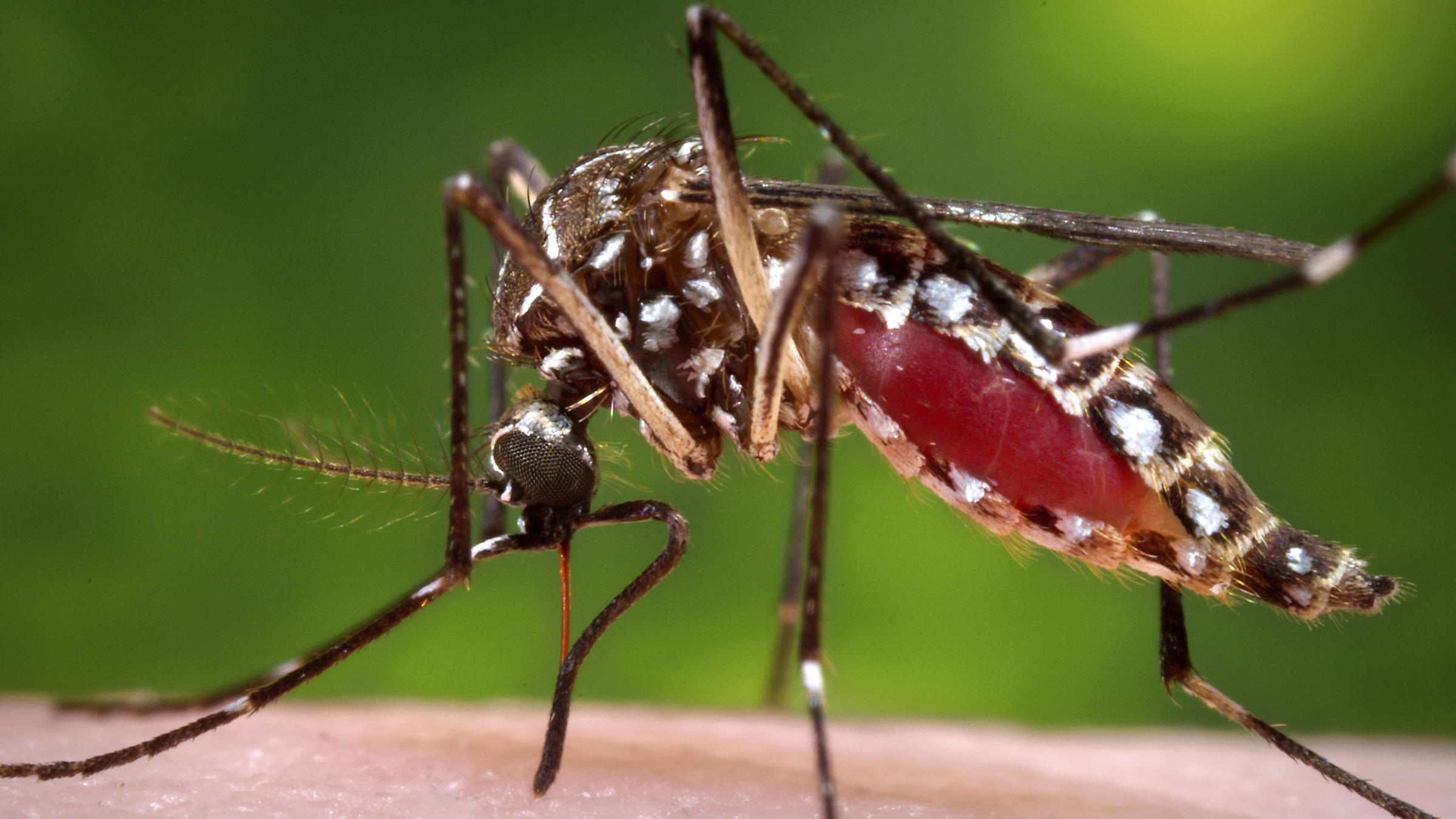 Do not pinch the stinger with fingers or tweezers because this will squeeze more venom into the skin. Instead, run a credit card across the stinger, from the opposite direction that it went in (Picture 2). For honeybee stings, part of the bee’s body may be attached to the stinger. Wasps, yellow jackets, and hornets do not leave a stinger and can sting many times.
Do not pinch the stinger with fingers or tweezers because this will squeeze more venom into the skin. Instead, run a credit card across the stinger, from the opposite direction that it went in (Picture 2). For honeybee stings, part of the bee’s body may be attached to the stinger. Wasps, yellow jackets, and hornets do not leave a stinger and can sting many times.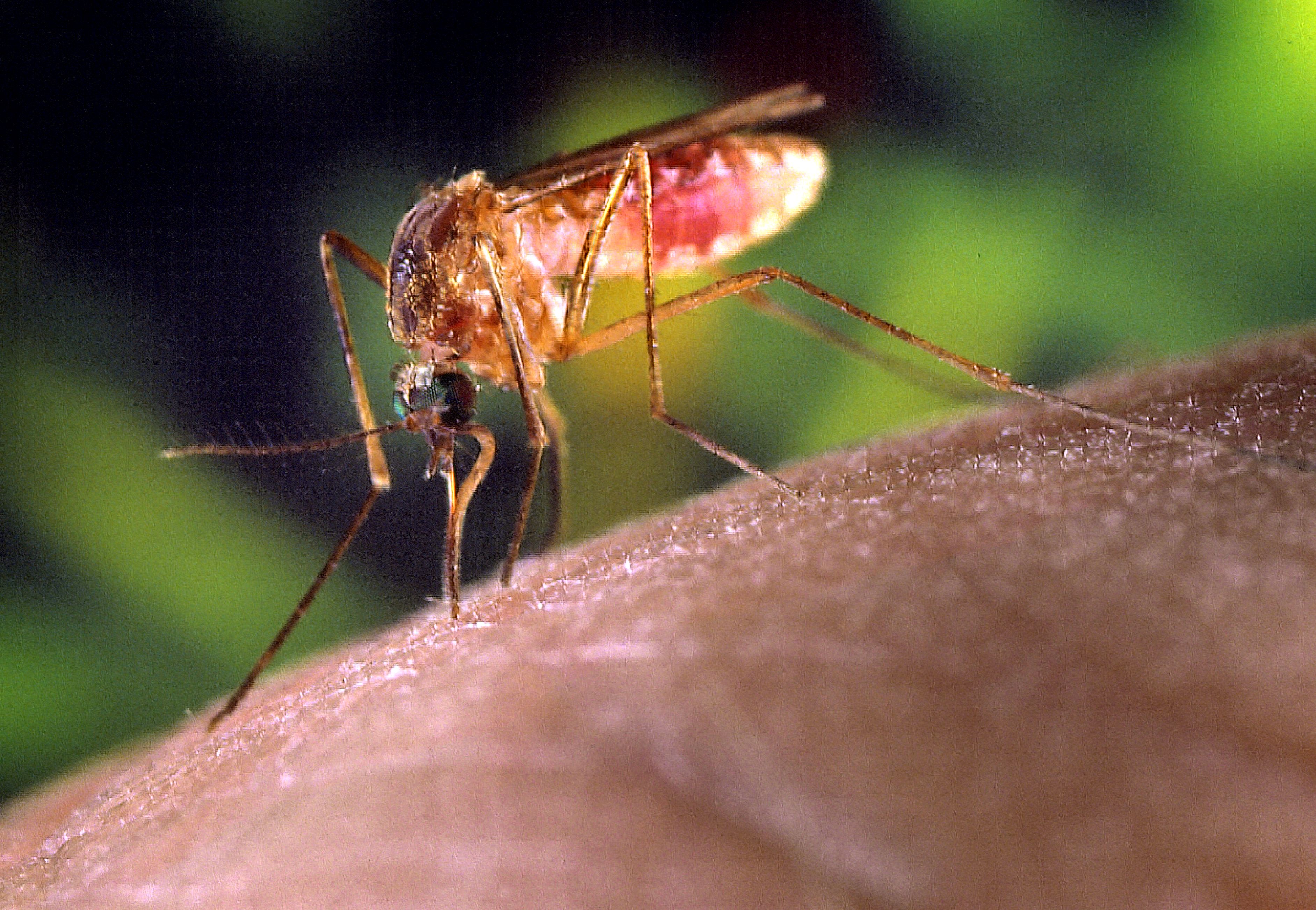
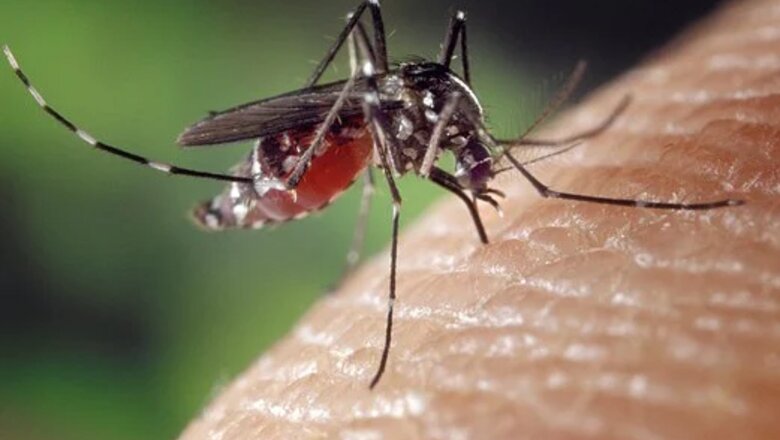 Do not let him walk barefoot. He should avoid wearing loose fitting clothing that can trap the insect inside.
Do not let him walk barefoot. He should avoid wearing loose fitting clothing that can trap the insect inside.

